Medical treatment for vertigo. Vertigo: Understanding Causes, Symptoms, and Effective Treatments
What are the main causes of vertigo. How can vertigo symptoms be identified. What are the most effective treatments for vertigo. How is benign paroxysmal positional vertigo (BPPV) diagnosed and managed. What role does the inner ear play in vertigo. When should you seek medical attention for vertigo symptoms. How can vestibular rehabilitation help with vertigo.
The Inner Workings of Vertigo: Causes and Mechanisms
Vertigo is a disorienting sensation that makes individuals feel as if they or their surroundings are spinning or moving. This condition often stems from issues within the inner ear, which plays a crucial role in maintaining balance. Let’s explore the primary causes of vertigo:
- Benign Paroxysmal Positional Vertigo (BPPV)
- Meniere’s Disease
- Vestibular Neuritis or Labyrinthitis
- Less common causes (e.g., head injuries, migraines, certain medications)
BPPV occurs when tiny calcium particles, called canaliths, become dislodged from their normal position and collect in the inner ear. This displacement disrupts the signals sent to the brain about head and body movements relative to gravity, resulting in vertigo episodes.

Meniere’s disease is an inner ear disorder characterized by a buildup of fluid and changing pressure within the ear. This condition not only causes vertigo but can also lead to tinnitus (ringing in the ears) and hearing loss.
Vestibular neuritis or labyrinthitis is typically caused by a viral infection that leads to inflammation in the inner ear, particularly around the nerves responsible for balance perception.
How does the inner ear contribute to balance?
The inner ear contains structures called semicircular canals and otolith organs, which detect head movements and position changes. These structures work together to send signals to the brain, helping maintain balance and spatial orientation. When these structures are affected by conditions like BPPV or inflammation, it results in the disorienting symptoms of vertigo.
Recognizing Vertigo: Key Symptoms and Triggers
Identifying vertigo symptoms is crucial for proper diagnosis and treatment. Common symptoms include:
- A sensation of spinning or tilting
- Feeling of being pulled in one direction
- Nausea and vomiting
- Balance problems
- Headache
- Sweating
- Nystagmus (abnormal eye movements)
Vertigo episodes can last from a few minutes to several hours, and their frequency can vary. Many people experience vertigo when changing head positions, such as:
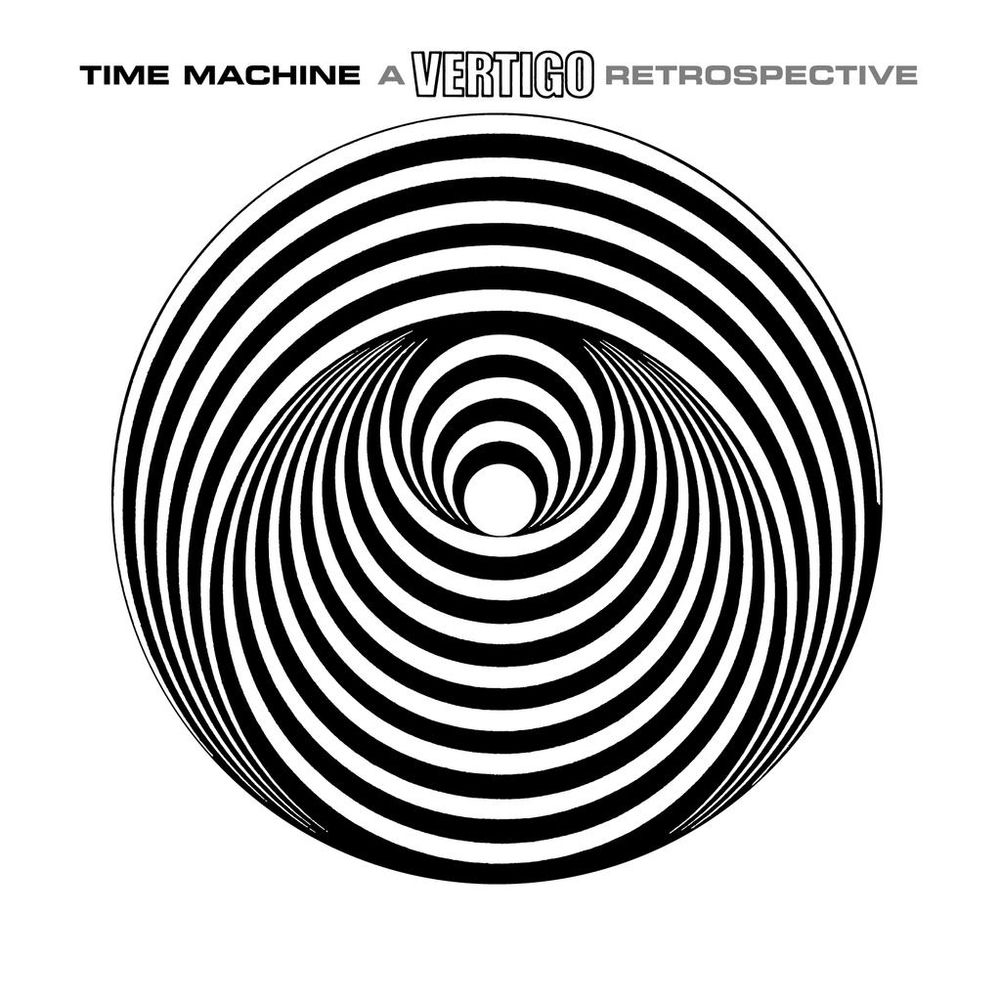
- Rolling over in bed
- Tilting the head back
- Bending over
- Standing up quickly
Can vertigo be triggered by specific activities?
Yes, certain activities or movements can trigger vertigo episodes, especially in individuals with BPPV. These triggers often involve changes in head position or rapid movements. Some people may experience vertigo when looking up at tall buildings, lying down, or even during specific exercises.
Diagnosing Vertigo: Medical Approaches and Tests
Diagnosing vertigo involves a combination of medical history review, physical examination, and specialized tests. Healthcare providers often use the following approaches:
- Detailed patient history
- Neurological examination
- Dix-Hallpike test (for BPPV)
- Vestibular function tests
- Imaging studies (e.g., MRI or CT scan) in some cases
The Dix-Hallpike test is particularly useful for diagnosing BPPV. During this test, the healthcare provider moves the patient’s head into various positions to trigger vertigo symptoms and observe eye movements.

What is the significance of nystagmus in vertigo diagnosis?
Nystagmus, or involuntary eye movements, is a key indicator in vertigo diagnosis. During vertigo episodes, especially those caused by BPPV, the eyes may exhibit a characteristic jerking motion. Observing these eye movements helps healthcare providers determine the underlying cause of vertigo and guide treatment decisions.
Effective Treatments for Vertigo: From Home Remedies to Medical Interventions
Treatment for vertigo depends on its underlying cause. In many cases, vertigo resolves on its own as the brain adapts to inner ear changes. However, when treatment is necessary, options include:
- Vestibular rehabilitation
- Canalith repositioning maneuvers
- Medications
- Surgery (in rare cases)
Vestibular rehabilitation is a form of physical therapy designed to strengthen the vestibular system. This therapy helps train other senses to compensate for vertigo, improving balance and reducing symptoms over time.
Canalith repositioning maneuvers, such as the Epley maneuver, are highly effective for BPPV. These specific head and body movements help relocate the displaced calcium particles in the inner ear, often providing immediate relief.

How effective are canalith repositioning maneuvers for BPPV?
Canalith repositioning maneuvers, particularly the Epley maneuver, have shown high success rates in treating BPPV. Studies indicate that these maneuvers can resolve vertigo symptoms in up to 80-90% of cases after one or two treatments. However, it’s crucial to have these maneuvers performed or guided by a trained healthcare professional to ensure proper technique and effectiveness.
Medications for Vertigo: Managing Symptoms and Addressing Underlying Causes
While medications may not cure vertigo, they can help manage symptoms and treat underlying conditions. Common medications used in vertigo treatment include:
- Antihistamines (e.g., meclizine)
- Anti-nausea medications (e.g., ondansetron)
- Diuretics (for Meniere’s disease)
- Antibiotics or steroids (for infection-related vertigo)
- Migraine medications (for vestibular migraines)
It’s important to note that medication use should be guided by a healthcare provider, as some medications can have side effects or interact with other drugs.

Are there any natural remedies that can help alleviate vertigo symptoms?
While scientific evidence is limited, some people find relief from vertigo symptoms through natural remedies. These may include:
- Ginger tea or supplements for nausea
- Staying hydrated
- Avoiding triggers (e.g., certain head movements or foods)
- Practicing relaxation techniques
- Using essential oils like peppermint or lavender for aromatherapy
However, it’s crucial to consult with a healthcare provider before trying any natural remedies, especially if you’re taking medications or have underlying health conditions.
Living with Vertigo: Coping Strategies and Lifestyle Adjustments
While dealing with vertigo can be challenging, there are several strategies to help manage symptoms and improve quality of life:
- Identifying and avoiding triggers
- Making home modifications for safety
- Practicing balance exercises
- Using assistive devices when necessary
- Managing stress and anxiety
- Maintaining a healthy lifestyle
Creating a safe home environment is crucial for individuals with vertigo. This may involve removing tripping hazards, installing handrails, and ensuring adequate lighting. Additionally, learning to recognize early signs of a vertigo episode can help individuals take precautions and avoid potential accidents.

How can stress management techniques help with vertigo?
Stress and anxiety can exacerbate vertigo symptoms in some individuals. Incorporating stress management techniques such as deep breathing exercises, meditation, or yoga can help reduce the frequency and intensity of vertigo episodes. These practices can also improve overall well-being and help individuals cope with the challenges of living with vertigo.
When to Seek Medical Attention: Red Flags and Emergency Situations
While vertigo is often benign, certain symptoms may indicate a more serious underlying condition. It’s important to seek immediate medical attention if vertigo is accompanied by:
- Sudden, severe headache
- Chest pain or heart palpitations
- Difficulty speaking or understanding speech
- Sudden vision changes
- Weakness or numbness in the face, arms, or legs
- Loss of consciousness
- High fever
These symptoms could indicate more serious conditions such as stroke, heart attack, or central nervous system disorders that require immediate medical intervention.
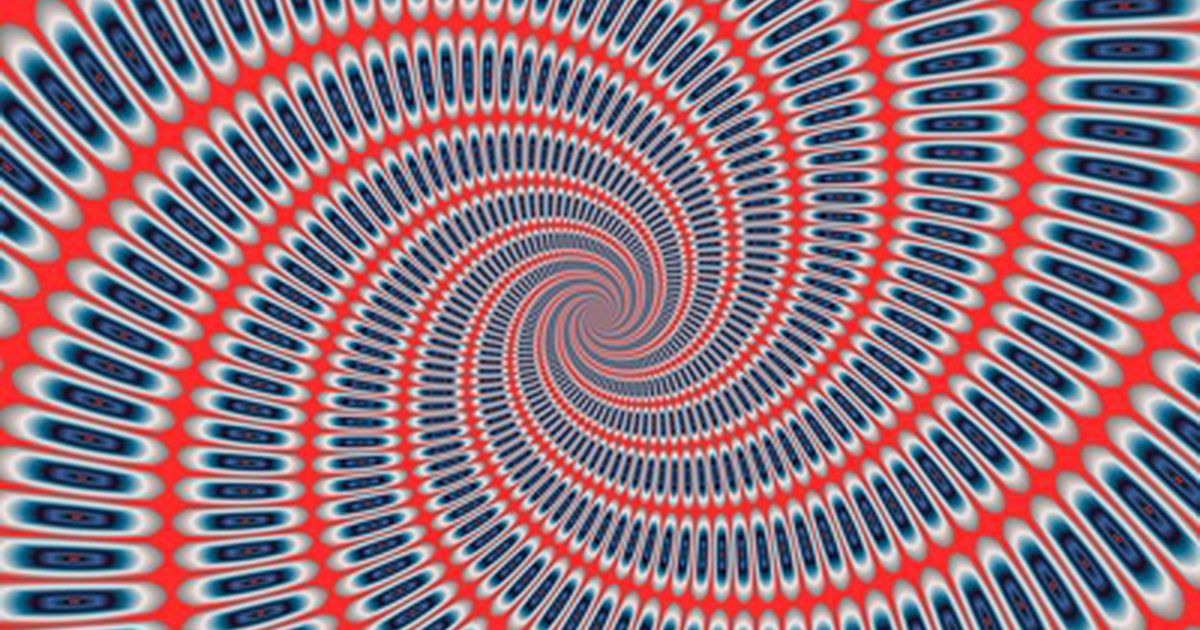
How can one differentiate between benign vertigo and more serious conditions?
While it can be challenging to differentiate between benign vertigo and more serious conditions without medical expertise, there are some key factors to consider:
- Duration of symptoms: Benign vertigo episodes typically last seconds to minutes, while persistent dizziness may indicate a more serious issue.
- Associated symptoms: Vertigo accompanied by neurological symptoms like weakness, numbness, or speech difficulties warrants immediate medical attention.
- Trigger patterns: Benign vertigo, especially BPPV, is often triggered by specific head movements, while more serious conditions may cause constant or unpredictable symptoms.
- Age and risk factors: Sudden onset of severe vertigo in older adults or those with cardiovascular risk factors may require urgent evaluation.
When in doubt, it’s always best to consult a healthcare provider for proper evaluation and diagnosis.
Advances in Vertigo Research: New Treatments and Future Directions
The field of vertigo research is continuously evolving, with new treatments and diagnostic techniques emerging. Some promising areas of research include:
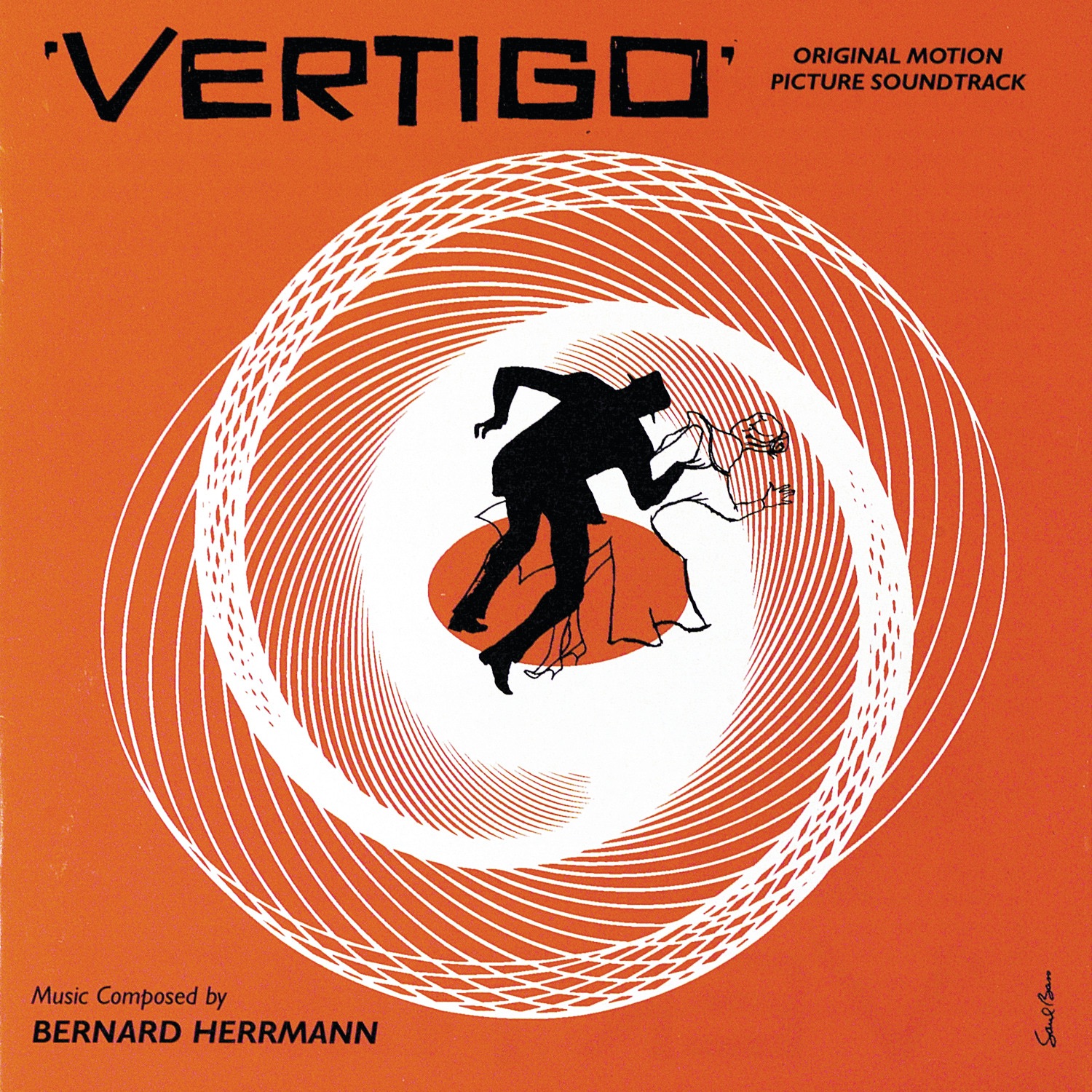
- Improved vestibular implants for severe balance disorders
- Gene therapy for inherited vestibular disorders
- Novel drug therapies for Meniere’s disease
- Advanced imaging techniques for more accurate diagnosis
- Virtual reality-based rehabilitation programs
These advancements hold the potential to improve diagnosis, treatment, and quality of life for individuals suffering from vertigo and related balance disorders.
How might virtual reality technology revolutionize vertigo treatment?
Virtual reality (VR) technology shows promise in revolutionizing vertigo treatment through several mechanisms:
- Customized rehabilitation: VR can create immersive environments tailored to each patient’s specific vertigo triggers, allowing for more targeted and effective therapy.
- Enhanced engagement: Interactive VR exercises can improve patient motivation and adherence to rehabilitation programs.
- Real-time feedback: VR systems can provide immediate feedback on balance and movement, helping patients make adjustments and track progress.
- Safe practice environment: Patients can practice challenging movements or situations in a controlled, virtual setting without risk of injury.
- Remote therapy: VR-based treatments could potentially be administered remotely, increasing access to specialized care for patients in rural or underserved areas.
While further research is needed to fully establish the efficacy of VR in vertigo treatment, early studies show promising results in improving balance, reducing symptoms, and enhancing overall quality of life for vertigo patients.
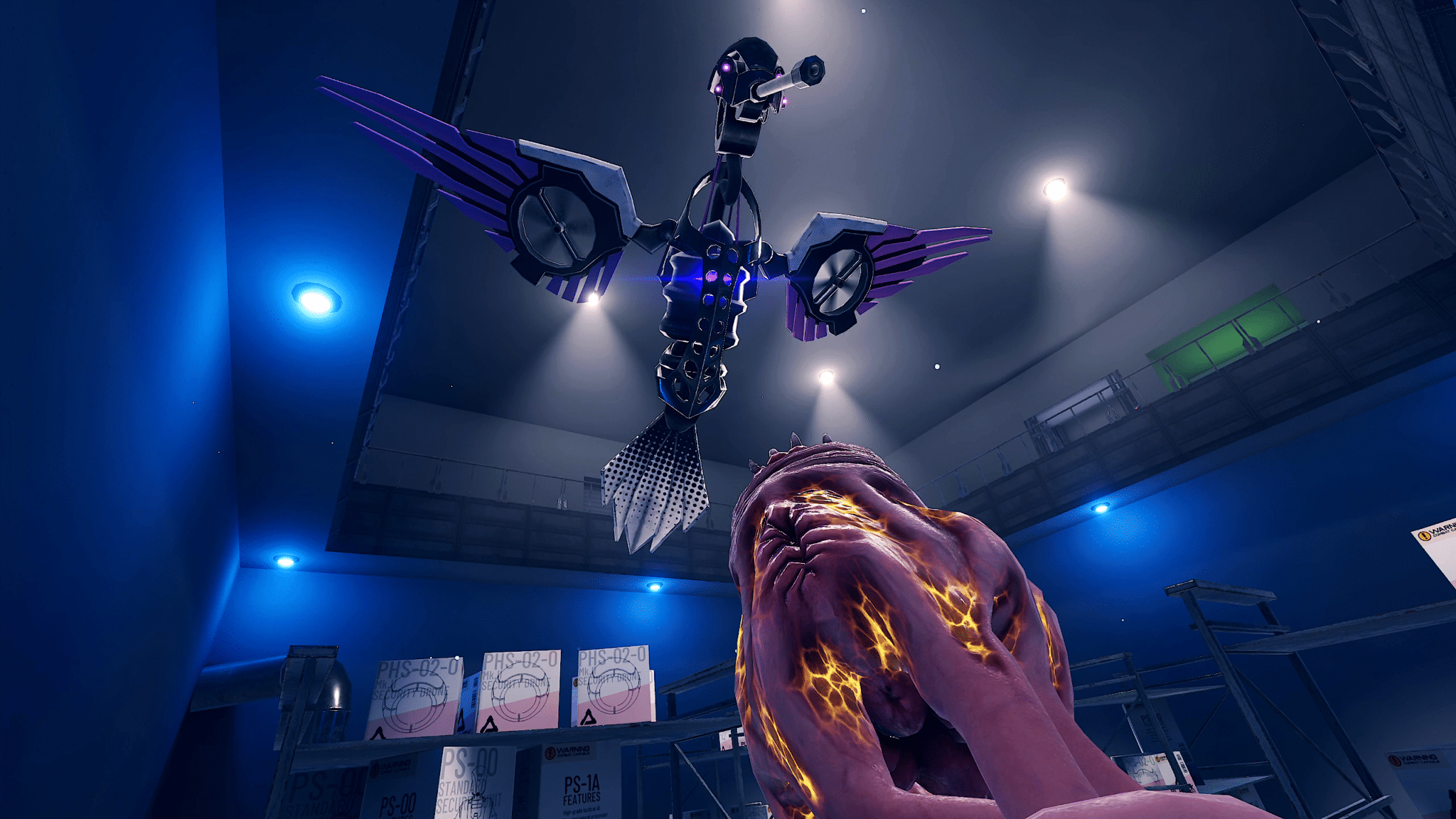
Vertigo: Causes, Symptoms, and Treatment
Vertigo is a sensation of feeling off balance. If you have these dizzy spells, you might feel like you are spinning or that the world around you is spinning.
Causes of Vertigo
Vertigo is often caused by an inner ear problem. Some of the most common causes include:
BPPV. These initials stand for benign paroxysmal positional vertigo. BPPV occurs when tiny calcium particles (canaliths) are dislodged from their normal location and collect in the inner ear. The inner ear sends signals to the brain about head and body movements relative to gravity. It helps you keep your balance.
BPPV can occur for no known reason and may be associated with age.
Meniere’s disease. This is an inner ear disorder thought to be caused by a buildup of fluid and changing pressure in the ear. It can cause episodes of vertigo along with ringing in the ears (tinnitus) and hearing loss.
Vestibular neuritis or labyrinthitis. This is an inner ear problem usually related to infection (usually viral). The infection causes inflammation in the inner ear around nerves that are important for helping the body sense balance
This is an inner ear problem usually related to infection (usually viral). The infection causes inflammation in the inner ear around nerves that are important for helping the body sense balance
Less often vertigo may be associated with:
Symptoms of Vertigo
Vertigo is often triggered by a change in the position of your head.
People with vertigo typically describe it as feeling like they are:
- Spinning
- Tilting
- Swaying
- Unbalanced
- Pulled to one direction
Other symptoms that may accompany vertigo include:
Symptoms can last a few minutes to a few hours or more and may come and go.
Treatment for Vertigo
Treatment for vertigo depends on what’s causing it. In many cases, vertigo goes away without any treatment. This is because your brain is able to adapt, at least in part, to the inner ear changes, relying on other mechanisms to maintain balance.
For some, treatment is needed and may include:
Vestibular rehabilitation. This is a type of physical therapy aimed at helping strengthen the vestibular system. The function of the vestibular system is to send signals to the brain about head and body movements relative to gravity.
This is a type of physical therapy aimed at helping strengthen the vestibular system. The function of the vestibular system is to send signals to the brain about head and body movements relative to gravity.
Vestibular rehab may be recommended if you have recurrent bouts of vertigo. It helps train your other senses to compensate for vertigo.
Canalith repositioning maneuvers. Guidelines from the American Academy of Neurology recommend a series of specific head and body movements for BPPV. The movements are done to move the calcium deposits out of the canal into an inner ear chamber so they can be absorbed by the body. You will likely have vertigo symptoms during the procedure as the canaliths move.
A doctor or physical therapist can guide you through the movements. The movements are safe and often effective.
Medicine. In some cases, medication may be given to relieve symptoms such as nausea or motion sickness associated with vertigo.
If vertigo is caused by an infection or inflammation, antibiotics or steroids may reduce swelling and cure infection.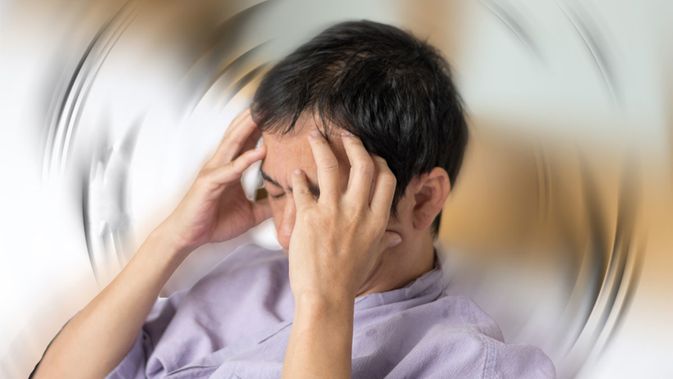
For Meniere’s disease, diuretics (water pills) may be prescribed to reduce pressure from fluid buildup.
Surgery. In a few cases, surgery may be needed for vertigo.
If vertigo is caused by a more serious underlying problem, such as a tumor or injury to the brain or neck, treatment for those problems may help to alleviate the vertigo.
Benign Paroxysmal Positional Vertigo (BPPV)
Topic Overview
What is benign paroxysmal positional vertigo (BPPV)?
Vertigo is the feeling that you are spinning or the world is spinning around you. Benign paroxysmal positional vertigo is caused by a problem in the inner ear. It usually causes brief vertigo spells that come and go.
For some people, BPPV goes away by itself in a few weeks. But it can come back again.
BPPV is not a sign of a serious health problem.
What causes BPPV?
Benign paroxysmal positional vertigo (BPPV) is caused by a problem in the inner ear. Tiny calcium “stones” inside your inner ear canals help you keep your balance. Normally, when you move a certain way, such as when you stand up or turn your head, these stones move around. Sometimes these stones move into an area of your inner ear called the semicircular canal. When you move your head in certain ways, the stones in the semicircular canal move. Sensors in the semicircular canal are triggered by the stones, which causes a feeling of dizziness.
Tiny calcium “stones” inside your inner ear canals help you keep your balance. Normally, when you move a certain way, such as when you stand up or turn your head, these stones move around. Sometimes these stones move into an area of your inner ear called the semicircular canal. When you move your head in certain ways, the stones in the semicircular canal move. Sensors in the semicircular canal are triggered by the stones, which causes a feeling of dizziness.
What are the symptoms?
The main symptom is a feeling that you are spinning or tilting when you are not. This can happen when you move your head in a certain way, like rolling over in bed, turning your head quickly, bending over, or tipping your head back.
BPPV usually lasts a minute or two. It can be mild, or it can be bad enough to make you feel sick to your stomach and vomit. You may even find it hard to stand or walk without losing your balance.
How is BPPV diagnosed?
Your doctor can usually tell that you have BPPV by asking you questions about your vertigo and doing a physical exam.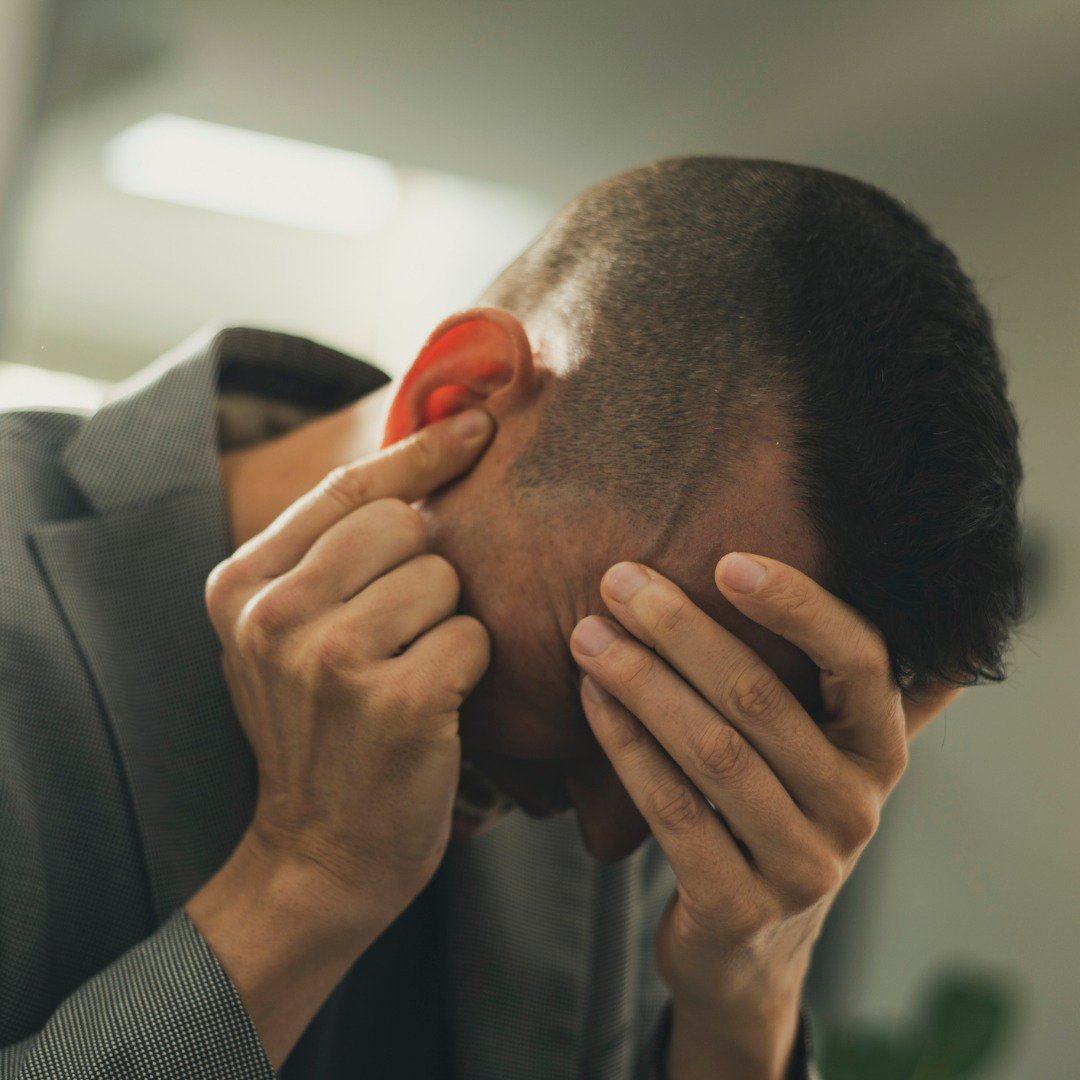 You may have a test where your doctor watches your eyes while turning your head and helping you lie back. This is called the Dix-Hallpike test.
You may have a test where your doctor watches your eyes while turning your head and helping you lie back. This is called the Dix-Hallpike test.
There are other things that can cause vertigo, so if your doctor doesn’t think you have BPPV, you may have other tests too.
How is it treated?
Your doctor can usually do one of two procedures in the office that works for most cases of BPPV. These procedures are called the Epley maneuver and the Semont maneuver. If you don’t want treatment or if treatment doesn’t work, BPPV usually goes away by itself within a few weeks. Over time, your brain will likely get used to the confusing signals it gets from your inner ear. Either way, you can do some simple exercises that train your brain to get used to the confusing vertigo signals.
Medicine may help with severe nausea and vomiting.
Be extra careful so that you don’t hurt yourself or someone else if you have a sudden attack of vertigo.
- Do not drive or cycle if there is any chance that vertigo could strike and make you lose control.
 (This depends on what kind of movement triggers vertigo for you.)
(This depends on what kind of movement triggers vertigo for you.) - At home, keep floors and walkways free of clutter so you don’t trip.
- Avoid heights.
- Don’t use tools or machines that could be dangerous if you suddenly get dizzy or lose your balance.
Cause
Benign paroxysmal positional vertigo (BPPV) is caused by a problem in the inner ear. Tiny calcium “stones” inside your inner ear canals help you keep your balance. Normally, when you move a certain way, such as when you stand up or turn your head, these stones move around. Sometimes these stones move into an area of your inner ear called the semicircular canal. When you move your head in certain ways, the stones in the semicircular canal move. Sensors in the semicircular canal are triggered by the stones, which causes a feeling of dizziness.
Symptoms
The main symptom of benign paroxysmal positional vertigo (BPPV) is the feeling that you or your surroundings are spinning, whirling, or tilting. This sensation is called vertigo.
This sensation is called vertigo.
It is important to understand the difference between vertigo and dizziness. People often use those two terms as if they meant the same thing. But they are different symptoms, and they may point to different problems.
- Vertigo is the feeling that you are spinning or the world is spinning around you. It happens when your body’s balance sensory systems disagree about what kind of movement they sense. You may find it hard to walk or stand. You may even lose your balance and fall. If your vertigo is bad enough, you may also have nausea and vomiting.
- Dizziness is not a feeling that you are spinning. It is a woozy or unsteady feeling.
To find out whether your vertigo is caused by BPPV, your doctor will want to find out what causes it, how bad it is, and how long it lasts. With BPPV:
- Tilting the head, looking up or down, rolling over in bed, or getting in and out of bed causes vertigo.
- It begins a few seconds after you move your head.

- It usually lasts less than a minute. The spinning sensation may be mild, or it may be bad enough to cause nausea and vomiting.
- Vertigo becomes less noticeable each time you repeat the same movement. After 3 or 4 repeats, the movement may no longer cause vertigo. Several hours may pass before the same movement again causes vertigo.
What Happens
Benign paroxysmal positional vertigo (BPPV) causes a whirling, spinning sensation even though you are not moving. If the vertigo is bad, it may also cause nausea or vomiting. The vertigo attacks happen when you move your head in a certain way, such as tilting it back or up or down, or by rolling over in bed. It usually lasts less than a minute. Moving your head to the same position again may trigger another episode of vertigo.
BPPV often goes away without treatment. Until it does, or is successfully treated, it can repeatedly cause vertigo with a particular head movement. Sometimes it will stop for a period of months or years and then suddenly come back.
What Increases Your Risk
Scientists think you’re more likely to develop benign paroxysmal positional vertigo (BPPV) if you have one of these conditions:
- You are an older adult.
- You have a head injury.
- You have an inflammation of the inner ear or of the nerve that connects the inner ear to the brain, a condition called vestibular neuritis.
- You have ear surgery.
If you’ve had one episode of vertigo caused by BPPV, you are likely to have more.
When should you call your doctor?
Call
911
or other emergency services immediately if you have vertigo (a spinning sensation) and:
- You passed out (lost consciousness).
- You have symptoms of a stroke, such as:
- Sudden numbness, tingling, weakness, or loss of movement in your face, arm, or leg, especially on only one side of your body.
- Sudden vision changes.
- Sudden trouble speaking.

- Sudden confusion or trouble understanding simple statements.
- Sudden problems with walking or balance.
- A sudden, severe headache that is different from past headaches.
- You have chest pain.
- You have a headache, especially if you also have a stiff neck and fever.
- You have sudden hearing loss.
- You have numbness or tingling that does not go away, anywhere on your body.
- You have vomiting that doesn’t stop.
- You had a recent head injury.
Call your doctor now or seek immediate care if:
- You have an attack of vertigo that is different from those you have had before or from what your doctor told you to expect.
- You need medicine to control nausea and vomiting caused by severe vertigo.
Call your doctor to schedule an appointment if:
- This is the first time you have had an attack of vertigo.

- You have a low-pitched roaring, ringing, or hissing sound in your ear, especially if you have not had this before. This is called tinnitus.
- You have frequent or severe episodes of vertigo that interfere with your activities.
Watchful waiting
If your symptoms suggest benign paroxysmal positional vertigo (BPPV), watchful waiting may be appropriate. Over time BPPV may go away on its own. But treatment with a simple procedure in your doctor’s office (either the Epley or Semont maneuver) can usually stop your vertigo right away. Talk to your doctor. If your vertigo interferes with your normal daily activities or causes nausea and vomiting, you may need treatment.
Who to see
The following health professionals are able to diagnose and treat BPPV and the causes of vertigo:
Exams and Tests
Benign paroxysmal positional vertigo (BPPV) is diagnosed with a physical exam and your medical history. But diagnosing the cause of the spinning, whirling sensation of vertigo can be difficult. Several diseases, the side effects of medicines, and head injuries can also cause vertigo.
But diagnosing the cause of the spinning, whirling sensation of vertigo can be difficult. Several diseases, the side effects of medicines, and head injuries can also cause vertigo.
A Dix-Hallpike test may be done to help your doctor find out the cause of your vertigo. During this test, he or she will carefully observe any involuntary eye movements. This will help your doctor know whether the cause of your vertigo is inside your brain, your inner ear, or the nerve connected to your inner ear. The Dix-Hallpike test also can help your doctor find out which ear is affected.
If your symptoms or the results of your exam make your doctor think you don’t have BPPV, other tests may be done:
- Electronystagmography, which attaches small wires to your face that measure eye movements. It looks for the special eye movements that happen when the inner ear is stimulated. The pattern of eye movements can point to the location of the cause of the vertigo, such as the inner ear or the central nervous system.

- Imaging tests, such as magnetic resonance imaging of the head (MRI) or computed tomography of the head (CT scan). These tests may be done if the symptoms and exam findings could be caused by a brain problem.
- Hearing testing to detect hearing loss. A special hearing test can determine whether the nerve from the inner ear to the brain is working correctly. Hearing loss with vertigo usually points to a problem other than BPPV, such as Ménière’s disease or labyrinthitis.
Treatment Overview
Benign paroxysmal positional vertigo (BPPV) may go away in a few weeks by itself. If treatment is needed, it usually consists of head exercises (Epley and Semont maneuvers). These exercises will move the particles out of the semicircular canals of your inner ear to a place where they will not cause vertigo.
Over time, your brain may react less and less to the confusing signals triggered by the particles in the inner ear. This is called compensation. Compensation occurs most quickly if you continue normal head movements, even though doing so causes the whirling sensation of vertigo. A Brandt-Daroff exercise may also be done to speed the compensation process.
Compensation occurs most quickly if you continue normal head movements, even though doing so causes the whirling sensation of vertigo. A Brandt-Daroff exercise may also be done to speed the compensation process.
Medicines called vestibular suppressants (such as antihistamines, sedatives, or scopolamine) may be tried if your symptoms are severe.
Antiemetic medicines may also be used to reduce nausea and vomiting that can occur with vertigo.
In rare cases, surgery may be used to treat BPPV.
Prevention
In most cases, benign paroxysmal positional vertigo (BPPV) cannot be prevented. But some cases may result from head injuries. Wearing a helmet when bicycling, motorcycling, playing baseball, or doing other sports activities can protect you from a head injury and BPPV.
Home Treatment
You can reduce the whirling or spinning sensation of vertigo when you have benign paroxysmal positional vertigo (BPPV) by taking these steps:
- Use two or more pillows at night.

- Avoid sleeping on your side with the ear that’s causing the problem facing down.
- Get up slowly in the morning and sit on the edge of the bed for a moment before standing.
- Avoid leaning over to pick things up or tipping your head far back to look up.
- Be careful about reclining, such as when you are in the dentist’s chair or having your hair washed at a hair salon.
- Be careful about playing sports that require you to turn your head, lean over, or lie flat on your back.
You can also help yourself by doing balance exercises and taking safety precautions.
- Brandt-Daroff exercises can be done at home to help your brain get used to the abnormal balance signals triggered by the particles in the inner ear.
- Balance exercises for vertigo, such as standing with your feet together, arms down, and slowly moving your head from side to side, may help you keep your balance and improve symptoms of vertigo.
- Stay safe when you have balance problems by adding grab bars near the bathtub and toilet and keeping walking paths clear.
 This may prevent accidents and injuries.
This may prevent accidents and injuries.
Staying as active as possible usually helps the brain adjust more quickly. But that can be hard to do when moving is what causes your vertigo. Bed rest may help, but it usually increases the time it takes for the brain to adjust.
Medications
Medicines do not cure benign paroxysmal positional vertigo (BPPV). But they may be used to control severe symptoms, such as the whirling, spinning sensation of vertigo and the nausea and vomiting that may occur.
Medicine choices
Medicines to reduce the whirling sensation of vertigo are called vestibular suppressants. They include:
- Antihistamines, such as meclizine (Antivert).
- Scopolamine (Transderm-Scop).
- Sedatives, such as clonazepam (Klonopin).
Antiemetic medicines, such as promethazine (Promethegan), may be used if you have severe nausea or vomiting.
What to think about
Medicines that calm the inner ear (vestibular suppressants) may also slow down the brain’s ability to adjust to the abnormal balance signals triggered by the particles in the inner ear. They should be taken only to control severe symptoms.
They should be taken only to control severe symptoms.
Surgery
Ear surgery is an option for treating benign paroxysmal positional vertigo (BPPV) only in severe cases when other treatments have not worked.
Other Treatment
Exercises are used to treat benign paroxysmal positional vertigo (BPPV). These exercises help the particles in the semicircular canals of your inner ear move around, so that they don’t cause vertigo. Although the exercises usually stop the vertigo for months or years, the problem may return and cause your symptoms to come back.
Other treatment choices
Exercises that may be used to treat BPPV include:
- Epley maneuver and Semont maneuver. These exercises often cure BPPV by moving the particles in your inner ear so that they do not affect your balance. During these exercises, your doctor will help you hold your head in a series of positions. Often, one treatment is enough.
 You may be taught to do these exercises on your own at home.
You may be taught to do these exercises on your own at home. - Brandt-Daroff exercise. This exercise may be tried if the Epley or Semont maneuvers do not work. During this exercise, you will repeatedly go from a sitting position to a lying position until the vertigo stops. This exercise may help speed your brain’s ability to adjust to the conflicting balance signals it is getting. You need to do these exercises several times a day for weeks for them to work.
What to think about
These exercises can get rid of BPPV symptoms. The Epley and Semont maneuvers usually are more comfortable than the Brandt-Daroff exercise, and they work faster—in one or two treatments rather than being repeated several times a day for weeks. So these maneuvers have become the first line of treatment.footnote 1
References
Citations
- Fife TD, et al. (2008).
Practice parameter: Therapies for benign paroxysmal positional vertigo (an evidence-based review). Report of the Quality Standards Subcommittee of the American Academy of Neurology. Neurology, 70(22): 2067–2074.
Other Works Consulted
- Hillier SL, McDonnell M (2011). Vestibular rehabilitation for unilateral peripheral vestibular dysfunction. Cochrane Database of Systematic Reviews (2).
- Hilton M, Pinder D (2004). The Epley (canalith repositioning) manoeuvre for benign paroxysmal positional vertigo. Cochrane Database of Systematic Reviews (2). Oxford: Update Software.
- Johnson J, Lalwani AK (2012). Vestibular disorders. In AK Lalwani, ed., Current Diagnosis and Treatment in Otolaryngology—Head and Neck Surgery, 3rd ed., pp. 729–738. New York: McGraw-Hill.
- Kerber KA (2011). Episodic vertigo. In ET Bope et al., eds., Conn’s Current Therapy 2011, pp. 210–213. Philadelphia: Saunders.
- Von Brevern M, et al. (2006). Short-term efficacy of Epley’s manoeuvre: A double-blind randomised trial. Journal of Neurology, Neurosurgery, and Psychiatry, 77(8): 980–982.
- Walker MF, Daroff RB (2015). Dizziness and vertigo. In DL Kasper et al., eds., Harrison’s Principles of Internal Medicine, 19th ed., vol. 1, pp. 148–151. New York: McGraw-Hill Education.
Credits
Current as of:
December 2, 2020
Author: Healthwise Staff
Medical Review:
Anne C. Poinier MD – Internal Medicine
Kathleen Romito MD – Family Medicine
E. Gregory Thompson MD – Internal Medicine
Current as of: December 2, 2020
Author:
Healthwise Staff
Medical Review:Anne C. Poinier MD – Internal Medicine & Kathleen Romito MD – Family Medicine & E. Gregory Thompson MD – Internal Medicine
Poinier MD – Internal Medicine & Kathleen Romito MD – Family Medicine & E. Gregory Thompson MD – Internal Medicine
Drug treatment of Vertigo
Doses are all those used routinely for adults, and will generally not be
appropriate for children. Pregnancy category varies from
A (controlled human studies have failed to demonstrate a risk to the fetus)
through D (there is positive evidence of human fetal risk, use only in a life-threatening
situation or for a serious disease for which safer drugs cannot be used or are
ineffective.
Anticholinergics which affect muscarinic receptors, such as scopolamine,
increase motion tolerance. The action appears to be mainly central, although there are receptors in both the periphery and centrally. Anticholinergics also affect compensation, producing a
reversible overcompensation if administered after compensation has been attained to a
vestibular imbalance (Zee, 1988). The mixed antihistamine/anticholinergic drugs are often available OTC, or “over the counter”. Examples are meclizine, dimenhydrinate, and diphenhydramine. The antihistamine component has side effects of sleepiness and long term weight gain (see below). Thus it makes some sense to use prescription anticholinergics rather than OTC mixed drugs (such as meclizine). Hyoscyamine, which is the L-isomer of atropine, is a common ingrediant in antispasmodic treatments for IBS. Hyoscine, or scopolamine, is mainly used in the patch form to prevent motion sickness.
The mixed antihistamine/anticholinergic drugs are often available OTC, or “over the counter”. Examples are meclizine, dimenhydrinate, and diphenhydramine. The antihistamine component has side effects of sleepiness and long term weight gain (see below). Thus it makes some sense to use prescription anticholinergics rather than OTC mixed drugs (such as meclizine). Hyoscyamine, which is the L-isomer of atropine, is a common ingrediant in antispasmodic treatments for IBS. Hyoscine, or scopolamine, is mainly used in the patch form to prevent motion sickness.
Agents with central anticholinergic effects are most
important in treating vertigo, since anticholinergic drugs that do not cross the
blood-brain barrier are ineffective in controlling motion sickness (Takeda et al, 1989).
Unlike antihistamines which will be discussed subsequently, pure anticholinergics are
ineffective if administered after symptoms have already appeared.
All anticholinergics used in the management of vertigo have prominent side
effects of dry mouth, dilated pupils, and sedation. They all make it harder to think as well as acetylcholine is an important neurotransmitter in the brain. Scopolamine and atropine
They all make it harder to think as well as acetylcholine is an important neurotransmitter in the brain. Scopolamine and atropine
are nonspecific muscarinic receptor antagonists (Barton et al, 1994; Soto et al, 2013). Diphenidol (Vontrol), is also an anticholinergic, although little used in the US. There are also some reports of scopolamine inducing migraine, as well as a withdrawall syndrome. There is no reason to believe that any one nonselective ACH antagonist (e.g. scopolamine) is better than any other ACH antagonist (e.g. meclizine, hyocyamine, and many other antihistamines), but scopolamine has no central antihistamine component (which is associated with sleepiness and weight gain). Oral versions of scopolamine would seem equally likely to work as patches (e.g. oral drugs for IBS) for motion sickness, but there currently is no oral version of scopolamine (hyoscine). The atrophine derivitive, hyocyamine (L-atropine), can be used instead.
Cholinergic agonists that cross into the brain, such as physostigmine, can cause a motion-sickness syndrome (Soto et al, 2013). Cholinergic agonists that do not cross into the brain such as neostigmine, do not produce motion sickness. It is
Cholinergic agonists that do not cross into the brain such as neostigmine, do not produce motion sickness. It is
to be hoped that agents selective for vestibular subtypes of muscarinic receptors will eventually be developed or discovered among our presently available pharmacopoeia,
as these agents may provide vestibular suppression with less side effects.
Addiction is possible to the anticholinergics. This has been described
for scopolamine (Luetje and Wooten 1996), and other anticholinergics
may also have addiction syndromes. Withdrawal has been described from a similar agent to meclizine, diphenhydramine. Overdose is similar to acute psychosis. Hospitalization may then precipitate withdrawal. (Thomas et al, 2009). Addiction to the patch can be managed by withdrawall, sometimes facilitated by use of oral agents containing hyocyamine.
Antihistamines. While the precise role of histamine in central vestibular
processing is uncertain, there are data indicating that centrally acting antihistamines
prevent motion sickness and reduce the severity of its symptoms even if taken
after the onset of symptoms (Takeda et al, 1989).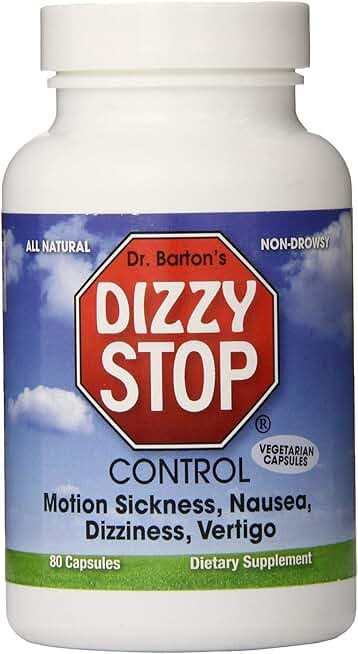 All the antihistamines in
All the antihistamines in
general use for control of vertigo also have anticholinergic activity. With
the possible exception of astemizole (Hismanal) in Meniere’s
disease (Turner and Jackson, 1989), antihistamines that do not cross the
blood brain barrier, are not used to control vertigo. Unfortunately, astemizole
does not appear to be generally useful as it is ineffective in preventing motion
sickness (Kohl et al, 1987) and because it has significant potential toxicity.
There is evidence for involvement of several types of histamine receptors. Serafin
and others (1993) reported that histamine increases firing in MVN cells, mediated
through the h3 receptor. h2 receptors are present in guinea pig vestibular nucleus,
but they don’t seem to be relevant to vertigo, and it does not appear that the
therapeutic effects of h2 receptor blockers can be attributed to blockate of
h2 (Timmerman, 1994). h4 receptor agonists appear to cause the same result as
blockade of h3 receptors. Most antihistamines also have calcium
Most antihistamines also have calcium
channel blocking effect (according to Timmerman, 1994).
Histamine agonists that act on receptor subtypes are also used for treatment of vertigo (e.g. betahistine). This can sometimes result in a peculiar situation where individuals take both antihistamines and histamine agonists at the same time. When this is done, it would seem most logical to use a peripherally acting antihistamine that does not cross the blood brain barrier, with the hope that the central action will dominate. While in theory, one might attempt to avoid central antihistamine side effects (e.g. drowsiness, weight gain), by combining a mixed anticholinergic/antihistamine such as meclizine with betahistine, we do not know of any evidence one way or the other. We would guess that it does not work.
| Drug | Lowest effective dose | Time constant in the blood | “Low dose” to manage chronic vertigo |
| Lorazepam | 0.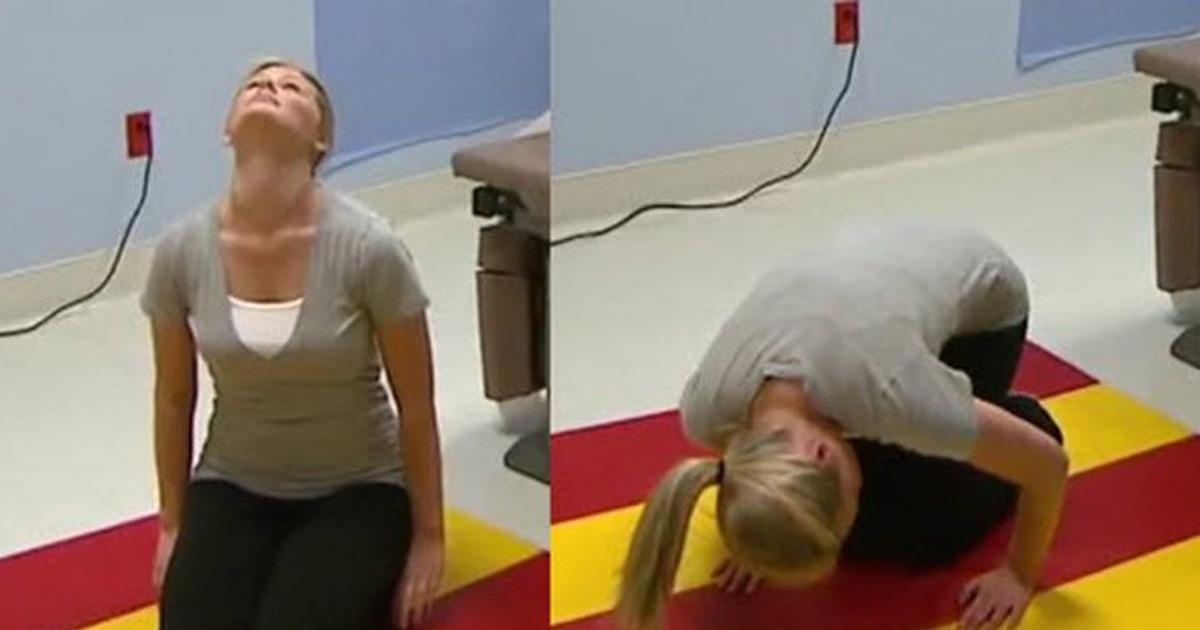 5 5 | 12-18 hours. | 0.5 mg twice/day |
| Clonazepam | 0.5 | 30 hours | 0.5 mg twice/day |
| Diazepam | 2 mg | several, up to 24 hours. | 2 mg twice/day |
| Alprazolam | 0.25 mg | 8 hours (6-12-15) | Not recommended |
| Chlordiazepate | 7.5 mg | 10-30 hours | Not recommended |
Benzodiazepines are GABA modulators, acting centrally to suppress vestibular
responses. See this page for a longer discussion. They increase the affinity of chloride channel opening (Soto et al, 2013). There are differential effects across benzodiazepines on Gaba-A receptor subtypes. In small doses, these drugs are extremely useful. Addiction, impaired memory, increased risk of falling, and possibly impaired vestibular compensation are
their main shortcomings.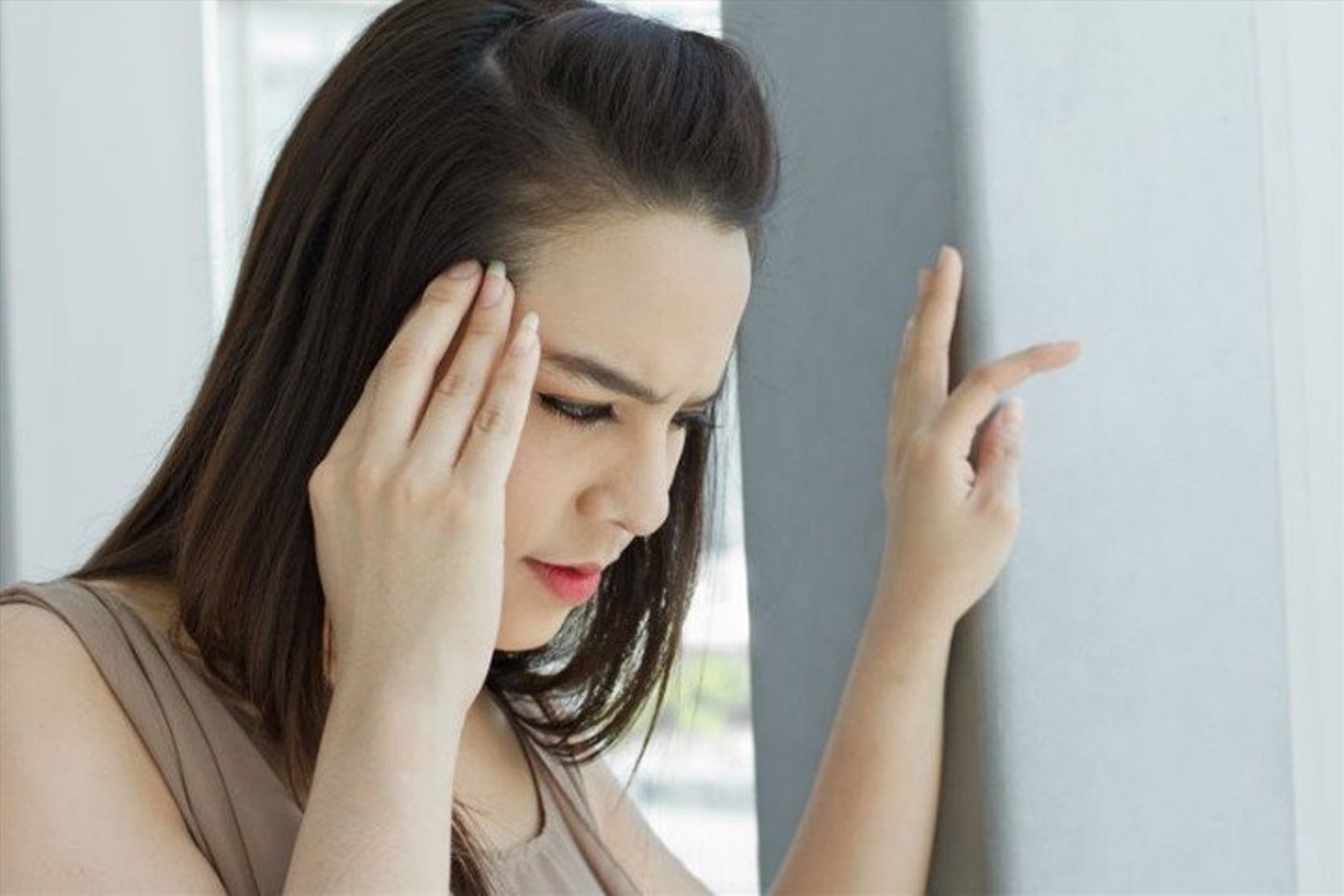
Lorazepam and klonazepam are particularly useful agents because of their effectiveness and simple kinetics. Addiction, the biggest problem, can usually be avoided by keeping the dose to 0.5 mg BID or less. Note that lorazepam and klonazepam have quite different time constants (i.e. durations of action), with lorazepam being shorter, which makes for some interesting trade-offs. Other problems with benzodiazepines include higher incidence of car accidents (risk x1.5), and hip fractures (risk x 1.8) (Ray, Griffin et al. 1987; Ray, Fought et al. 1992). Fall risk is increased in the elderly by roughly the same proportions.
Similarly, low doses of diazepam (Valium) (2 mg) can be quite effective for dizziness. Clonazepam (Klonopin), is as effective a vestibular suppressant as lorazepam (Ganaca et al, 2002). The author prefers to avoid use of alprazolam (Xanax) for vestibular suppression, because of the potential for a difficult withdrawal syndrome. Long acting benzodiazepines are not helpful for relief of vertigo.
Doses are all those used routinely for adults,
and will generally not be appropriate for children. Pregnancy
category varies from A (controlled human studies have failed to demonstrate
a risk to the fetus) through D (there is positive evidence of human fetal risk,
use only in a life-threatening situation or for a serious disease for which
safer drugs cannot be used or are ineffective.
Drugs that speed gastric emptying, such as metoclopramide
(Reglan) and powdered ginger root may be helpful in managing emesis (Grontved
et al, 1988). Metoclopramide, a dopamine antagonist and a potent central antiemetic,
is ineffective in preventing motion sickness (Kohl, 1987). Domperidone
(Motilium) is an antiemetic that does not cross the blood brain barrier and
thus has less side effects. Although droperidol has been used in the past, it
is no longer recommended.
There is a possible role for new antiemetics which are
a 5-HT3 antagonists (ondansetron, Zofran; granisetron, Kytril) used
in treating the nausea associated with chemotherapy and post-operative nausea
and vomiting. The high cost of these agents presently limits their usefulness
The high cost of these agents presently limits their usefulness
in the treatment of vertigo, but they are reasonable agents to try in situations
where the more usual agents are ineffective or contraindicated. These agents
do not appear to be helpful in preventing motion sickness (Stott et al, 1989).
In theory, these agents might be less effective for vestibular elicited emesis
than agents with other pharmacologic actions.
Antidepressants.
Mechanisms of effect of antidepressants for dizziness
- Anticholinergic (such as amitriptyline and nortriptyline)
- Antimigraine (such as amitriptyline, nortriptyline or venlafaxine)
- Antidepressant (improved well being)
- Anti-anxiety
All antidepressants increase ataxia and many cause
nausea as well as hypotension. Thus one would think that their role would be
limited. However, the ability of antidepressants to manage the psychological
fallout from dizziness is often helpful (Horii, Mitani et al.2004) Horii, A.,
K. Mitani, et al. (2004). Some antidepressants such as amitriptyline have
strong anticholinergic properties which can be of use in managing dizziness. There are several reports of a positive effect, lacking an explanation (e.g. Grubb et al, 1996)
Calcium channel blockers are the most promising agents
in this group. More detail about these drugs can be found here.
Calcium channel blockers, such as flunarizine and cinnarizine,
are popular antivertiginous agents outside of the U.S. (Rascol et al, 1989).
Flunarizine however is also a dopamine blocker, and cinnarizine an antihistamine. Some calcium channel blockers, such as verapamil, have quite strong constipating
effects, which may be helpful in managing diarrhea caused by vestibular imbalance.
However, calcium channel blockers often have anticholinergic and/or antihistaminic
activity and the relative importance of calcium channel blocking associated
activity for vestibular suppression has not been determined (Rascol et al, 1989).
Another problem is that almost all antihistamines have calcium-entry blocking
capacity and/or calmodulin blocking properties, making it difficult to ascertain
the mechanism of action (Timmerman, 1994).According to Soto et al (2013), Cinnarizine also blocks pressure sensitive potassium channels, which may provide it with a separate mechanism for treatment of hydrops.
Calcium channel blockers may be effective
in “vestibular Menieres”,
or “benign recurrent vertigo”, as persons with this diagnosis have
a high prevalence of migraine (Rassekh and Harker, 1992), for which calcium channel blockers can be very effective.
According to Soto et al (2013) the most commonly used calcium channel blockers for vertigo are nimodipine, nitrendipine (long lasting) and verapamil. Other long lasting dihydropyridines such as amlodipine, felodipine, nicardipine and nifedipine are seldom used. The author has found daily verapamil to be helpful in a roughly 1/3 of his patients
with classic Menieres, causing amelioration or suppression of attacks as long
as a reasonable dose is taken.This use of verapamil for vertigo has not been
studied or approved in the US. Nimodipine, however, has recently been reported
to be effective as prophylaxis of Menieres. In the US, our experience is that only verapamil is used to any great extent.Gabapentin is also a calcium channel blocker (it is not a GABA agonist in spite of the name).
Diuretics
Carbonic anhydrase inhibitors such as acetazolamide are commonly used to treat episodic ataxia, and are rarely used for Meniere’s disease. Weak carbonic anhydrase inhibitors such as topiramate and zonisamide have some efficacy in migraine. Most of these are sulfonamides.
A potassium channel blocker, 3-4 DAP (diaminopyridine) as well as its close relative, 4AP, has been reported useful for persons with ataxia and downbeating nystagmus.
This drug is sometimes used for fatigue in MS, as well as for a rare neuromuscular disorder (Eaton Lambert).
Side effects include
headache,
fatigue
perioral and/or distal paraesthesia 30-60 minutes after a dose,
difficulty in sleeping. Excessive dosage can lead to seizures. The typical starting dose is 10 mg three times/day. 4-AP is a similar agent that has better CNS absorption. We have had no success with this drug at all in treating suitable patients in our clinical practice, and while we continue to be hopeful. Note that the brand-name version of 4AP is priced about 20 times higher than the compounded version of the same chemical.
A sodium channel blocker, phenytoin (Dilantin),
has also been reported to be protective against motion sickness (Knox
et al, 1994). We have not found this useful.
The author of this review has had no success in limited trials
in patients with severe motion sickness unresponsive to the usual agents. Gabapentin
(Neurontin), carbamazepine (Tegretol) and oxcarbazepine (Trileptal) are also
sometimes successfully used in treatment of vertigo, although their use has
not been studied extensively.Gabapentin has also been successfully used to
suppress certain types of central nystagmus (Stahl et al, 1995). As these agents affect GABA, which is important in vertigo,
an antivertigo effect is reasonable.The sodium channel blockers carbamazepine and oxcarbazepine are particularly
useful in paroxysmal disorders such as microvascular
compression syndrome, and neuritis of the vestibular nerve. They are also occasionally used for tinnitus. Because the both lower serum sodium, they are also sometimes used for treatment of hydrops (i.e. Meniere’s disease).Recent agents
have been developed for epilepsy which are glutamate antagonists, but
at this writing, they have not been tried as treatments of vertigo.
Another Gaba agonist, Baclofen (Lioresal) has shown some
promise in reducing vestibular asymmetry. A human trial indicated that it is not useful in speeding up vestibular compensation (de Valc et al, 2009), but nevertheless this agent may have other uses. GABA would be more likely to slow down compensation.
GABA would be more likely to slow down compensation.
This agent might be suitable for patients with uncompensated vestibular asymmetries.
In our clinical practice, we use Baclofen very rarely.
Dopamine blockers for vertigo:
There are a large assortment of dopamine blockers used for emesis. These drugs may also treat migraine (as they are often effective migraine abortive drugs). In fact, Flunarizine is the dominant migraine prevention drug used in Europe. All are limited by their propensity to cause movement disorders (such as drug induced parkinsonism) as well as others. In our view, these drugs should be “last resort” for treatment of chronic vertigo conditions. We are, for example, against the use of Stugeron (cinnarizine) for any chronic dizzy condition. Flunarizine is a close relative to cinnarizine. These drugs are generally considered acceptable for acute use however.
Histamine agonists:
Whereas the antihistamines used in treating vertigo
are usually centrally acting histamine h2-receptor antagonists, in some parts
of the world an h2+h3-receptor agonist and h4-h5 antagonist, Serc (betahistine),
is used.This is an interesting group
that has been poised to move from the uncertain role category to the
more conventional category for decades. The main problem with it is that rigorous studies proving efficacy are generally are not available, although unrigorous studies abound. According to Timmerman quoting Laurikainen, h2 receptors do not appear
to be important at all in vestibular function and the antivertiginous effects
of antihistamines are mediated either through non-h2 receptors or other effects
of the drugs. Also, the h2 (and h3 effects) are minor. Serc’s
effects might occur through h3 agonism or h4 antagonism (Timmerman, 1994). h4
is an autoreceptor that modulates h2/h3 as well as potentially other neurotransmitter
systems. Recently a 4th histamine receptor (h5) has been identified. h5 antagonists are reported to suppress rat primary vestibular neuron firing (Desmadryl et al, 2012). Also, according to these authors, betahistine does not have a significant effect on the h5 receptor in conventional doses.This may account for the recent suggestions to push the dose up to very high levels (e.g. Strupp et al, 2008).
In the rat brainstem, betahistine produces a slight excitatory response in MVN neurons, and it reduces the excitatory effect of histamine (Soto et al, 2013).
Pragmatically, a betahistine dose of 16 mg twice to three times/day
is usually prescribed, although greater effect is obtained for doses as high
as 48 mg (Strupp,et al. 2008). The rationale for this use is that betahistine is said to increase
circulation to the inner ear (Halmagyi, 1992) or affect vestibular function through activity of h4 or h5 receptors (Kingma et al, 1997; Timmerman, 1994; Desmadryl et al, 2012). It is difficult to see why vasodilation should improve vertigo, as vasodilation/constriction are side effects of many medications that have no effect at all on vertigo (e.g isorbide). At this writing, as h3 agonism would be stimulatory, it appears most likely
that Serc acts through the h4 or h5 receptor.Serc is approved by the FDA
in the US but only if dispensed through compounding pharmacies. It was categorized, in essence, as a harmless substance. Histamine is
sometimes prescribed as sublingual drops or subcutaneous injections. It is the
author’s opinion that sublingual or subcutaneous histamine is a placebo as it
is rapidly degraded. Nevertheless, in the authors experience, Serc is moderately
effective in suppressing symptoms of Meniere’s disease, for uncertain reasons. Following the pharmacological
discussion above, Serc might be expected to be effective in any peripheral vestibular
disorder, not merely Meniere’s disease.
Opiods
Opiods often cause constipation, and drugs that cause constipation usually also reduce dizziness. Droperidol (a dopamine blocker) combined with fentanyl (a powerful opiate) was reported to be effective for acute attacks of Meniere’s disease (Soto et al, 2013).
Our thought is that these drugs are far too dangerous to use for this purpose, and that there are much easier ways to stop Meniere’s attacks (e.g. lorazepam and ondansetron together).
Steroids for vestibular disorders.
Corticosteroids such as decadron have
been advocated both for treatment of Meniere’s
disease and Vestibular neuritis,
in both cases, in an attempt to reduce the duration of a vertiginous episode.
They are also commonly used for sudden hearing loss. Data concerning efficacy for dizziness is presently conflicted (see here for a review of data). There are many possible mechanisms of efficacy — modulation of compensation (Cameron et al, 1999), reduction of immune responses in the inner ear (see here), reduction of swelling of the vestibular nerve (Strupp et al, 2004), reduction of emesis (Wattwil et al, 2003), increased activity promoting better recovery through a general effect on the sensation of wellbeing.(See here for the references).
Steroids are commonly used to treat acute flareups of Meniere’s disease. The author will occasionally use a few
day course of decadron (4 mg qd) or a medrol dose pack, when faced with a severe and unremitting vertigo
attributed to Menieres disease. The author routinely uses steroids in acute vestibular neuritis, when there is no serious coincident medical disorder (such as diabetes). All steroids are pregnancy category C, but they
are generally felt to be safe during the third trimester.More about oral steroids can be found here, and steroids injected through the ear drum, here.
Sympathomimetics.
These drugs increase norepinephrine. Examples include ephedrine and
the amphetamines. Sympathomimetics may increase alertness and thereby counterbalance
the sedative effects of vestibular suppressants. Sympathomimetics also may increase
compensation. However, if used for this purpose, the combination of a vestibular
suppressant with a drug targeted to increase compensation seems somewhat illogical.
Amphetamines are little used because of their addiction potential. Sympathomimetics
are generally pregnancy category C.Dopamine agonists reduce firing rate in the frog hair cells and also reduces resposne to glutamine (the excitatory transmitter) (Soto et al, 2013). On the other hand, dopamine antagonists are uncommonly used to treat vertigo (e.g. Droperidol, phenothiazines), suggesting that the net effect is against using dopamine agonists.
Acetyl-leucine.
This medication is marketed and largely
used in France (Rascol et al, 1995). It is claimed to exert a rapid antivertiginous effect
when administered intravenously in humans and also to act as a vestibular suppressant. It
is not used in the US for vertigo. The evidence for it working is not the best.
Ginkgo Biloba.
This extract is widely used in
France, but its efficacy is in question (Rascol et al, 1995). It has been reported
to suppress vertigo and to enhance vestibular compensation in animals. See here
for more information.
Selective ACH antagonists.
The ACH receptor has numerous
subtypes, and it would seem reasonable that a selective antagonist to the M2 receptor
might cause vestibular suppression without many of the untoward side effects of the more
general anti-ACH agents. Unfortunately, little research has been pursued in this direction
at the present time.
Alternative medicine agents.
Cocculus is advocated
for the temporary relief of lightheadedness. For-HEEL and Vertigo-HEEL is also
suggested for vertigo. NAC is also sometimes recommended for hearing disorders. See here
for more about these agents.N-acetyl Cysteine (NAC) is another agent suggested for dizziness or tinnitus. See this page.
Various individual agents, best avoided.
Varenicline (Chantix).
This drug, approved by the FDA for smoking cessation, has recently been reported useful for treatment of cerebellar ataxia (Zesiewicz et al, 2009). It is extremely surprising to find an agent that will ameliorate disorders caused by genetic damage to neurons. It is also disturbing that the number of individuals in the trial (7) was exactly the same as the number of authors on the study. In other words, it would seem to us that if this drug was effective, the number of subjects should be larger as patients with cerebellar disorders are common. We are frankly very dubious. We have never encountered a patient who responded to this mediation (who wasn’t attempting to stop smoking).
Trimetazidine
This drugs is a medication developed for angina (cardiac disturbance). It has been reported useful in diverse disorders (Soto et al, 2013), including Meniere’s disease. The evidence for this drug working is presently weak. For example, it is reported to be “as effective” as betahistine. Trimetazidine can also induce a myriad of CNS disorders, largely similar to those produced by dopamine antigonists (i.e. similar to haloperidol — Haldol).
Glutamate drugs:
Memantine
This drug is mainly a glutamate blocker (NMDA), and thus might be a vestibular suppressant. It was approved in the US for prevention of progression of Alzheimer’s disease. It also is reported to act on 5HT3, D2, and various cholinergic receptors (Soto et al, 2013). We have never encountered a dizzy patient who responded to memantine. We have also never encountered a patient whose pendular nystagmus responded to memantine. This is hardly suprising as it is a low-affinitive NMDA antagonist. A similar drug is caroverine, that is a glutamate AMPA receptor antagonist.
Hallucinogenic NMDA drugs (antagonists)
These include MK-01, phencyclidine (PCP, “angel dust”), and ketamine (“special K”) among others. Of course, side effects and abuse are a problem. Ketamine produces a general “lack of responsive awareness”, as well as dizziness (Soto et al, 2013).
Dizziness and vertigo – Better Health Channel
Dizziness can be a range of sensations including feeling light-headed, faint, woozy, unsteady or off-balance. Vertigo is a type of dizziness that feels as though you or your surroundings are spinning.
Dizziness is often caused by illnesses that affect the inner ear, such as benign paroxysmal positional vertigo (BPPV), migraine and inflammation of the inner ear balance apparatus (called vestibular neuritis).
Dizziness may also be caused by low blood pressure, some heart problems (such as cardiac arrhythmias), anxiety disorders such as panic attacks or (uncommonly) by hypoglycaemia (low blood sugar).
While some people understandably find it difficult to describe their dizziness, a description of a person’s dizziness and the circumstances in which it occurs may be very helpful in reaching a diagnosis.
Symptoms of dizziness and vertigo
Descriptions of dizziness may include:
- a sensation of movement (including spinning), either of yourself or the external environment
- unsteadiness, including finding it difficult to walk in a straight line
- light-headedness
- feeling faint.
Other symptoms that may accompany dizziness include:
- headache
- nausea and vomiting
- ringing or other sounds in the ears (tinnitus)
- difficulty hearing
- staggering gait and loss of coordination (ataxia)
- unusual eye movements, such as flitting of the eyes (nystagmus)
- finding it difficult to see clearly when moving, for example, when reading a sign while walking or driving.
The inner ear and balance
Inside the inner ear is a series of canals filled with fluid. These canals are oriented at different angles and, as the head moves, the movement of the fluid inside these canals tells the brain how far, how fast and in what direction the head is moving.
This information is then used by the brain to move the eyes an equal and opposite amount, so that the image that is ‘seen’ by the eyes does not blur and remains clear.
Causes of dizziness and vertigo
A wide range of conditions and diseases can cause dizziness, including:
- inner ear problems – disorders of the inner ear account for about half of all cases of persistent (ongoing) dizziness. Such disorders include Meniere’s disease, benign paroxysmal positional vertigo (BPPV) and vestibular neuritis
- anxiety disorders – stress or anxiety may play a role in causing dizziness or, more commonly, may be a contributing factor in dizziness from other causes, such as inner ear disease
- brain disorders – a common cause of dizziness is migraine, even without the headache that most people associate with a migraine. Very rarely, other causes of dizziness can include stroke or other brain diseases
- other conditions – some cases of dizziness are due to underlying medical conditions such as low blood pressure, infection, some heart problems (such as cardiac arrhythmias) and hypoglycaemia (low blood sugar). Medications that are used to treat conditions such as epilepsy, coronary heart disease and high blood pressure can also cause dizziness in some people
- unknown causes – although a cause may not be found in some people, it does not necessarily mean that these people cannot be helped by the appropriate treatment.
Diagnosis of dizziness and vertigo
In trying to work out the cause of a person’s dizziness, investigations may include:
- medical history, including careful questioning about the nature of the dizziness
- physical examination, which may include observing eye movements, positional testing and a blood pressure check
- specialised hearing or balance testing
- CT or MRI scans of the inner ear or brain
- other tests relating to specific conditions.
Treatment of dizziness and vertigo
Treatment depends on what your doctor thinks is causing your dizziness.
Potential treatment options may include:
- canalith positioning procedures – a special set of exercises designed to remove inner ear ‘crystals’ in benign paroxysmal positional vertigo (BPPV)
- migraine prevention medication
- medication to dampen the sensations of dizziness
- anti-nausea medication
- balancing exercises to ‘retrain’ the nervous system (usually prescribed by a vestibular physiotherapist)
- counselling and cognitive behaviour therapy – where anxiety or stress is a factor.
Where to get help
Medicine-induced Vertigo
Published: 2 March 2017
Medicine-induced Vertigo
Prescriber Update 38(1): 12-13
March 2017
Key Messages
- Consider the possibility of a medicine-related cause in patients
presenting with vertigo. - Many different types of medicines may cause vertigo.
- Some medicines that cause vertigo are also ototoxic.
- When reporting cases of ‘vertigo’ to CARM, it is helpful to
differentiate between true vertigo and other sensations of ‘dizziness’.
Vertigo has a number of possible causes, most commonly vestibular neuritis,
benign paroxysmal positional vertigo (BPPV) or vestibular migraine, but
it can also be caused by medicines1,2.
Vertigo is a sensation of motion either of the body or the surrounding
environment. It occurs when the brain receives conflicting visual, proprioceptive
and vestibular information about one’s position in space3.
Vertigo is often described by patients as ‘dizziness’, a non-specific
term used to express a variety of sensations that may also include light-headedness,
faintness and imbalance, all of which have many possible causes. It is important
to distinguish between these symptoms as the cause and management may differ.
Medicines known to Cause Vertigo
A variety of medicines have been associated with vertigo (Table 1).
Some medicines that cause vertigo are also ototoxic (eg, aminoglycosides,
anti-inflammatory medicines, phosphodiesterase type-5 inhibitors, furosemide).
When a patient who is taking a medicine known to be ototoxic presents with
vertigo, dose reduction or discontinuation of the medicine may need to be
considered to prevent irreversible hearing loss.
Table 1. Examples of medicines that may cause vertigo (this is
not an exhaustive list)
| Medicine Class | Examples |
|---|---|
| Analgesics | codeine |
| Antibiotics | aminoglycosides, macrolides, minocycline, nitrofurantoin, sulfamethoxazole |
| Anticonvulsants | levetiracetam, phenytoin, pregabalin |
| Anti-inflammatories | celecoxib, parecoxib, naproxen, prednisone |
| Antimalarials | mefloquine, quinine, hydroxychloroquine |
| Antivirals | oseltamivir, raltegravir |
| Anti-Parkinson’s drugs | lisuride |
| Cardiovascular drugs | nifedipine, furosemide, indapamide, prazosin, terazosin, glyceryl
trinitrate, isosorbide mononitrate, sotalol, timolol |
| Gastroenterology drugs | omeprazole, lansoprazole, sucralfate |
| Rheumatology drugs | zolendronic acid, alendronate |
| Phosphodiesterase type-5 inhibitors | sildenafil, vardenafil |
| Other medicines | lithium, haloperidol, benzodiazepines, desmopressin, melatonin |
Cases of Vertigo Reported to CARM
The Centre for Adverse Reactions Monitoring (CARM) received 98 case reports
of vertigo from 1 January 2006 to 31 December 2015.
The most frequently reported medicine was influenza trivalent vaccine
(11 reports). However, only three of the reports gave a clear description
of vertigo. In one of these cases, vertigo was associated with severe headache
and weakness on one side. In the remaining eight cases, the term vertigo
has been used, but it is not clear from the case description whether it
was true vertigo or dizziness.
The second most frequently reported medicine was thyroxine (eight reports).
The majority of these cases appear to be related to a change in formulation
that was introduced in September 2007.
The next most frequently reported medicines are simvastatin (five reports),
venlafaxine (five) and omeprazole (four).
As is often the case for medicines with an established safety profile,
cases of vertigo associated with medicines that are well known to cause
vertigo (eg, aminoglycosides), are rarely reported to CARM.
Vertigo is not listed as an adverse effect in the data sheets of the
majority of medicines in the cases reported to CARM. However, it is worth
noting, ‘dizziness’ is listed as an adverse effect.
When reporting cases of ‘vertigo’ to CARM, it is helpful to differentiate
between true vertigo and other forms of ‘dizziness’. A description of the
patient’s symptoms is useful, particularly whether or not the patient experienced
a sense of motion (eg, ‘felt that the room was spinning’). This helps CARM
and Medsafe to identify whether any update to the medicine’s data sheet
is necessary and any further communication is required.
References
- Drug-induced true vertigo and balance disorders. 2015. Prescrire
International. 24(156): 18. - Best Practice Advocacy Centre (BPAC). 2012. A delicate balance:
managing vertigo in general practice. URL:
www.bpac.org.nz/BPJ/2012/september/vertigo.aspx (accessed
22 October 2016). - Walker B, Colledge N, Ralston S, et al. 2014. Davidson’s Principles
and Practice of Medicine 22nd edition. Edinburgh: Churchill
Livingstone.
Care and Treatment Options for Care & Treatment | American Geriatrics Society
The treatment of your balance problem will depend on the cause or causes as well as on your medical history and general health. There are many approaches, and therapy is usually simple and effective.
Musculoskeletal problems
It is important to have a thorough evaluation of your musculoskeletal system, gait, and mobility, as well as a referral for evaluation and management by physical and occupational therapists if needed. Other disciplines that may play an important role in treatment are rheumatology and physical medicine and rehabilitation.
Inner ear problems
Benign Positional Paroxysmal Vertigo (BPPV)
The Epley maneuver (also called the canalith repositioning procedure) is a series of slow head and body movements. Your healthcare provider will help you through this simple 15-minute office procedure. It is designed to reposition any loose calcium crystals that have made their way into the semi-circular canals in your inner ears. The process is highly effective, painless, and non-invasive, and only takes a few minutes, but it may need to be done a couple of times.
After returning home, you must keep the treated ear above shoulder level for the rest of the day and avoid lying flat. Keep your head slightly elevated on pillows the night of the procedure. By the next day, your symptoms should be gone and restrictions on head positioning are no longer needed.
Your BPPV will most likely resolve itself within a few days or weeks at most. Medications are not recommended for BPPV.
Labyrinthitis
Your healthcare professional may prescribe motion-sickness medications such as meclizine (Antivert) to relieve the acute feelings of vertigo and dizziness, and possibly methylprednisolone to reduce inner ear inflammation. An antibiotic is sometimes prescribed. This condition can also simply resolve without any medications, so you may opt to “wait it out” if your symptoms are not severe.
Your healthcare professional may recommend you go to vestibular rehabilitation to complete vestibular exercises.
Meniere’s disease
Although this is considered a chronic disease, symptoms can be minimized so that you can carry out your daily functions comfortably. As in labyrinthitis, meclinizine (Antivert) can be taken to reduce the sensation of vertigo. Diuretics (water pills) and salt restriction may help reduce the fluid build-up in the inner ear. About 1,500 mg of salt per day should be your limit. Vestibular rehabilitation may also be helpful for persistent symptoms.
Try to distribute your meals evenly throughout the day so that you eat and drink similar amounts several times each day. This can help to regulate the fluids in your body. Five or six small meals may be better than three large ones.
Sudden Low Blood Pressure (orthostatic hypotension)
Your healthcare provider will review your medications to make sure that they are not causing the drop in your blood pressure. You may be prescribed new medications to increase your blood pressure, or your medications or dosages may be altered.
Simple changes to your diet may help to avoid a drop in blood pressure after eating, such as increasing the amount of salt you put in your food, reducing or eliminating alcohol, increasing your intake of fluids, or drinking a cup of coffee and extra fluids at each meal. Further, avoiding sudden shifts in positions is important, especially after you have been in bed all night, sitting for a long time, have just used the bathroom, or after a large meal. Be sure to get up slowly and wait a few minutes until any dizziness has passed before beginning to walk.
Consider wearing over-the-knee pressure stockings which will help to prevent blood pooling in your feet and lower legs. Avoid walking or exercising in hot weather.
A physiotherapist can show you how to pump your ankles and calves and clench your fists and forearms before moving from a lying or sitting to a standing position. This will encourage blood flow to your heart and upper body. Moving slowly and keeping your head elevated when lying down are all simple ways to avoid a sudden drop in blood pressure after a change in position.
Some medications are helpful in treating orthostatic hypotension:
- fludrocortisone increases the amount of blood in your body.
- midodrine can raise blood pressure while you are standing up.
- pyridostigmine, nonsteroidal anti-inflammatory drugs (NSAIDs), and caffeine may also help, though each of these medications run the risk of undesirable side effects.
Medication-related Balance Problems
Your healthcare provider will review all the medications, both prescription and non-prescription (over-the-counter), and herbal supplements that you take. Your provider may recommend changes and dosage adjustments to avoid side effects such as dizziness and unsteadiness. Benzodiazepines, sedatives/tranquilizers, narcotics/opioids, sleeping pills, antipsychotics, blood pressure medicines, antiepileptics, and antidepressants are particularly linked to dizziness, light-headedness, and increased fall risk.
Medical Conditions and Sensory Deficits
Treatments for medical conditions such as heart disease, atherosclerosis (hardening of the arteries), arthritis, Parkinson’s disease, multiple sclerosis, diabetes, nerve abnormalities, numbness (neuropathy), and “mini-strokes” (TIAs) must be reviewed by your healthcare provider. Your provider will make sure that you are being treated appropriately, and that the dosages of medicines are what is right for you.
Your eyesight and hearing should be checked and corrected with glasses or hearing aids if needed. Cataracts, glaucoma, and macular degeneration can be treatable. Follow your healthcare provider’s recommendations.
Last Updated December 2020
5 misconceptions about vertigo, dizziness
Many adults have experienced dizziness. It could have occurred after standing up too quickly, after a carnival ride, after taking a medication or during a migraine. Many body systems, including your muscles, bones, joints, eyes and the inner ear, must work normally for you to have normal balance. When these systems aren’t functioning well, you can experience balance problems.
About one-third of Americans at some point experience short-term bouts of feeling foggy, unsteady and lightheaded or feeling a spinning sensation. However, if these sensations recur or affect your life, it is time to talk with your health care provider.
Vertigo vs. dizziness
First, it is important to outline the differences between vertigo and dizziness. While these words are often used interchangeably, they describe different sensations. Dizziness is the feeling of being lightheaded, foggy or unsteady. Vertigo, which is less common than dizziness, is an overall spinning sensation.
Causes of vertigo and dizziness
Several conditions can cause balance problems, and these problems are usually related to a specific sign or symptom. Your health care team can identify the causes of your symptoms.
The most common cause of vertigo is when calcium crystals in your inner ear become dislodged from their normal position. This is called benign paroxysmal positional vertigo. Other causes of vertigo include inflammation of the nerves in your inner ear, migraine, head injury, Meniere’s disease, noncancerous tumor or motion sickness.
Often, the feelings of faintness or lightheadedness are caused by a significant drop in blood pressure, such as if you stand or sit up too quickly. Cardiovascular disease is another common cause.
Joint, muscle or vision problems, or nerve damage to your legs, frequently cause feelings of unsteadiness. Other causes could include medications you take, abnormalities in your inner ear or a neurological condition, such as Parkinson’s disease.
Finally, dizziness can be caused by medications, abnormalities in your inner ear or psychiatric disorders. It also can occur if you are hyperventilating or breathing rapidly.
Common misconceptions
These conditions often are misunderstood. Here are some common misconceptions about vertigo and dizziness:
- Dizziness is always related to ear crystals.
While benign paroxysmal positional vertigo is a common cause of vertigo, it is not associated with symptoms of dizziness. There are many other potential reasons for spells of dizziness. - Home remedies, like performing the canalith repositioning procedure or flushing your ears, will fix the problem.
Not only can this be harmful, it can cause more problems. Attempting to reposition crystals without instruction from your health care provider can cause the crystals to be moved incorrectly. There have been instances where patients have given themselves a concussion during the process or damaged their eardrums from flushing liquid into their ears. - Dizziness is all in your head.
Unfortunately, some people are told that their symptoms of dizziness or vertigo are not real or a result of mental illness. They are given advice to ignore it, and it will go away. Long-term dizziness and vertigo should not be ignored. Rather, a health care provider should treat these conditions. - Antihistamines, such as meclizine, solve dizziness.
Meclizine is used to prevent and control nausea, vomiting and dizziness caused by motion sickness. It works to block the signals to the brain that cause these symptoms. However, if you have recurring vertigo or dizziness, taking antihistamines is not a good long-term solution. Meclizine can make you feel drowsy, which results in many people falling asleep until the episodes are over. In this situation, the medication is covering the symptoms, but it is not treating the condition. - You just need to deal with this because there are no long-term treatment options.
Recurring vertigo or dizziness can significantly affect your life, such as missing social activities, or disrupting your abilities to drive or work. There is hope. Work with your health care team to identify the correct treatment option for you.
If you experience sudden vertigo with a decrease in hearing or ringing in your ear, seek emergency medical treatment. These are symptoms of sensorineural hearing loss, an inflammatory disorder probably caused by a virus that affect the nerves in the balance and hearing portions of your inner ear.
Mindy Zenke is a nurse practitioner in Ear, Nose & Throat (ENT/Otorhinolaryngology) in La Crosse, Sparta and Tomah, Wisconsin.
For the safety of our patients, staff and visitors, Mayo Clinic has strict masking policies in place. Anyone shown without a mask was either recorded prior to COVID-19 or recorded in a non-patient care area where social distancing and other safety protocols were followed.
90,000 Dizziness – types, causes, symptoms. Treatment of dizziness
Dizziness is an inappropriate perception of one’s body in space. This is a fairly common symptom of both neurological and mental, somatic diseases. Over the course of a lifetime, an average of 15–35% of the population encounters dizziness. Most often these are people after 60 years – 20%, after 70 – 30% and after 80 – 50%.
Regular bouts of dizziness when standing up significantly impair quality of life and can lead to injury from falling.This is especially dangerous for the elderly. For people of working age, such manifestations in the body often cause temporary loss of the ability to work fully.
Conventionally there are 5 main types of vertigo :
- vestibular;
- lipotimic;
- postural;
- cervicogenic;
- psychogenic.
Vestibular vertigo develops due to damage or physiological stimulation of the peripheral vestibular apparatus and central autonomic structures.As a rule, difficulties with orientation in space arise when rotating the head. All this goes away with loss of balance, periodic falls, nausea and other unpleasant manifestations.
Lipotimic dizziness occurs with lightheadedness after excessive insulin use or insulinoma. A characteristic symptom is “fog” in the head. A similar condition can occur after taking medications that depress the central nervous system. For example, tranquilizers.
Postural dizziness is manifested as a result of various walking disorders.
Cervicogenic dizziness is provoked by diseases of the cervical spine. Dizziness with this pathology becomes a consequence of painful sensations and limited mobility of the neck.
Psychogenic dizziness is characteristic of people with neuroses and personality disorders. Such attacks are manifested due to feelings of anxiety, panic attacks in various situations. This type is usually described as a feeling of unsteadiness, the presence of a heaviness in the head, a feeling of intoxication.Oscillatory eye movements in this case are absent, but, unlike other varieties, depression may occur afterwards. Treatment of vertigo in women and men includes psychotherapy, vestibular exercises, taking antidepressants.
Symptoms of dizziness and imbalance
People who experience dizziness more often describe their condition as follows:
- sensation of body movement;
- loss of balance and tilt of the body to one side;
- feeling of tension, squeezing in the head;
- fall for no reason;
- Wobbly gait or loss of confidence.
Symptoms may only get brighter with changes in body position or head rotation. Dizziness can come on suddenly and become so severe that you have to sit up or lie down abruptly. It can last a day or even several, although more often it is limited to a few minutes.
Causes of vertigo
Causes of vertigo are many – from diseases of the inner ear to taking certain medications. The most serious ones are determined by pathologies of blood circulation in the brain, as well as tumors or brain damage after falls or severe blows.
In many situations causes of sudden dizziness are diseases of the inner ear, benign paroxysmal positional vertigo, Meniere’s disease. Also, infectious ear diseases are often the basis.
Less common causes are vertebrobasilar insufficiency, stroke or intracerebral hemorrhage, multiple sclerosis, vestibular migraine, acoustic neuroma, orthostatic hypotension, hypoglycemia (low blood sugar), anemia (low iron levels), medication.
Fig. 1. BPPV
Inner ear infections
Vestibular neuritis and labyrinthitis are disorders that result from infections. They cause inflammation of the inner ear, or the nerve that connects the inner ear to the brain. After that, the transmission of sensory information from the ear to the brain is disrupted. The result is hearing impairment and balance problems.
Infection of the inner ear is caused by viruses or bacteria. You can find out about the presence of viruses in the body by the symptoms of an internal respiratory tract infection.Its manifestations are noted several weeks before the onset of dizziness. You can get an infection at any age.
Structure and function of the inner ear
Fig. 2. Structure of the ear
Anatomy of the ear
The inner ear includes a system of tubules and sacs that are filled with fluid. All this is called a labyrinth, whose functions are hearing and balance. Sound signals from the labyrinth are transmitted to the brain through the vestibulo-cochlear nerve with two branches. One transmits messages from the organ of hearing, and the other from the organs of balance.
The brain processes balance signals sent through the vestibular nerve from the right and left ear. When one side is infected, it sends out false signals. This is how information is presented that does not correspond to reality, which leads to dizziness.
Vestibular neuritis (nerve inflammation) affects the branch associated with balance. This leads to dizziness, a violation of the sense of oneself in space, a sharp movement of the eyeballs with a fast phase, but there are no transformations with hearing.A person may feel that objects are moving around, and when doing coordination exercises, he will usually make mistakes.
Also, experts use the term “vestibular neuronitis” (damage to sensory neurons of the vestibular ganglion). Its symptom is a pronounced, rapidly developing, paroxysmal dizziness. It is often characterized by vomiting and imbalance. Often, the development of symptoms of dizziness precedes ARVI. Sometimes, a few weeks before the detailed clinical picture, patients may notice short-term attacks of loss of balance.
Labyrinthitis (inflammation of the labyrinth) occurs when an infection affects both branches of the cochleo-vestibular nerve. Then hearing changes, dizziness attacks occur. Even with small turns of the head, the symptoms become more pronounced. Therefore, some people have to support their head with their hands.
Benign Paroxysmal Positional Vertigo (BPPV)
BPPV is one of the most common causes of vertigo , manifested by sudden movements and head waving.The duration of the state is limited to a few seconds or minutes. It occurs when calcium crystals (otoliths) in the inner ear begin to move. Because of this, the sensation of body rotation occurs.
The causes of BPPV are a history of craniocerebral trauma, as well as otitis media. Often, the cause of the disease cannot be identified. Then the diagnosis is confirmed by taking a Dix-Hallpike sample. To do this, the patient quickly lies down from a sitting position and lowers his head slightly, turned 45 degrees.The test is positive if, after a couple of seconds, an attack of dizziness and nystagmus occurs.
From 20 to 28% of patients with BPPV report symptom relief on their own up to a month after the onset of dizziness. The disease is benign and recurs within the first 12 months in only 15% of cases.
Fig. 3. Dix-Hallpike test: A – turn of the head to the right; B- turn the head to the left.
Treatment of BPPV
Among the methods of treatment is the Epley maneuver.It allows, by manipulating the head, to displace the otolith (crystal) into the insensitive zone – the vestibule of the inner ear.
Fig. 4. Epley’s maneuver
With the low effectiveness of such treatment, the patient is additionally prescribed a set of exercises to perform at home. This is Brandt-Deroff gymnastics, according to the method of which you need to do 2-3 times a day for 1 to 3 weeks. Taking medications in this case usually does not give positive dynamics.
Fig. 5. Gymnastics Brandt-Daroff
Operations are performed when repositioning techniques do not lead to anything.Surgical interventions carry the risk of complications in the form of facial nerve injury and hearing loss.
Among the possible operations:
- occlusion of the posterior semicircular canal;
- removal of the vestibular nerve;
- labyrintectomy;
- selective neurectomy.
Meniere’s disease
A disease characterized by repeated attacks of rotational vertigo. They last for several hours and are not without tinnitus, congestion or distention, and hearing impairment.It occurs in about 0.2% of the population, usually people from 40 to 60 years old. The disease is based on the expansion of the endolymphatic system in the inner ear, which leads to degeneration of the labyrinth receptors.
The disease has the following manifestations:
- dizziness;
- unsteady gait;
- Hearing impairment;
- problems with the perception of sounds;
- nausea and vomiting;
- ringing in the ears.
Treatment of Meniere’s disease
Treatment of an attack occurs by taking vestibulosuppressants.Prevention of the disease necessarily includes adherence to a low-salt diet, avoiding alcohol and caffeine, and the use of betahistine and diuretics.
If the chosen therapy does not lead to positive dynamics, more serious treatment is required. These can be injections of drugs directly into the ear or surgery.
Diagnostics in case of dizziness
In case of dizziness, patients undergo Khalmagi tests to identify the level of the vestibulo-ocular reflex. Its violation speaks of central and peripheral lesions.
The Khalmagi test does not require the use of additional equipment and long-term preparation. The patient needs to stop looking at the bridge of the nose of the specialist who is sitting opposite. In this case, the doctor holds the patient’s head with both hands and turns it from side to side by 15 degrees. With a normal vestibulo-ocular reflex, the eyes remain looking at a given point. If there is a violation, then the gaze turns with the turn of the head.
Fig. 6. Khalmagi test
Severe dizziness with repeated bouts of vomiting lasts up to 3-4 days, after which the patient is recovering.Recovery can take up to several months. In older people, it is usually prolonged and often incomplete. If no positive dynamics is observed within a month, then you need to conduct an MRI of the brain and audiometry to exclude Meniere’s disease.
When should I see a doctor?
An alarm should be sounded if the dizziness becomes regular or persistent. Immediate help is needed if you experience severe dizziness and unsteadiness with any of the following symptoms:
- headache that is suddenly on
- painful sensations in the chest area;
- Difficulty breathing
- Numbness or weakness of the limbs;
- fainting;
- Rapid or intermittent heartbeat
- delayed or slurred speech;
- coordination problems;
- ongoing vomiting;
- convulsions;
- Sudden hearing loss;
- Numbness or asymmetry of the face.
Treatment of vertigo
Treatment of vestibular neuronitis
When a diagnosis is made, the patient is hospitalized, but outpatient treatment is sometimes acceptable.
In either case, treatment should be aimed at reducing the degree of dizziness, stopping vomiting and accelerating vestibular compensation.
Symptomatic therapy includes the administration of vestibular suppressants. For vomiting, injectable forms of drugs are used. The duration of treatment is determined by the complexity of the manifestations of dizziness.However, in most cases, they are taken no longer than 3 days. An additional effect is provided by a course of corticosteroids and antiviral drugs for middle ear infections.
The vestibular apparatus is best stabilized by special exercises. At first, it can negatively affect the state of health, but after 2-3 days, therapy should stabilize the condition. You need to repeat gymnastics at least twice a day.
Tumors of the cerebellopontine angle (acoustic neuroma)
Quite a rare cause of dizziness.It manifests itself as slowly progressive hearing impairment and tinnitus. Rotational dizziness is rare, but instability is common. For some time, vestibular disturbances may be the only symptom of the disease.
After that, hearing disorders begin to be observed. People with a similar problem need to have an MRI of the brain with intravenous contrast. This will help check the patient for a tumor in the posterior fossa. When a tumor is found, patients need to consult a neurosurgeon for referral for surgery.
Fig. 7. Neuroma of the auditory nerve
Vertebrobasilar insufficiency and cerebrovascular diseases
Differs in the development of reversible dysfunctions of the brain stem, cerebellum and other structures, the blood to which enters through the basilar and vertebral arteries. Ischemic attacks can occur due to violations of their patency. The reason is atherosclerotic changes, vascular hypoplasia. A little less often, inflammation, extravasal compression of the vertebral artery (with a neck injury) or dissection of the artery become a prerequisite.
The key cause of loss of coordination with dizziness is malfunctioning of small arteries with increased pressure, diabetes or two diseases together. According to statistics, cerebral circulation disorders account for about 6%. The cause of dizziness at normal pressure can be malfunctions in the functioning of both the labyrinth itself due to circulatory problems, and disturbances in the area of various brain systems.
The majority of patients with vertebrobasilar insufficiency are diagnosed with other neurological symptoms.Separately, dizziness with vascular problems is very rare. In such situations, further diagnosis is required to remove other associated factors.
Do not associate attacks of dizziness when changing the position of the head with compression of the vertebral arteries. Often, the rapid development of severe dizziness along with nausea, vomiting and increased blood pressure can be perceived as a signal of the development of cerebrovascular disease. But it usually rises due to severe dizziness and stress.
If a person is suspected of having a stroke, it is necessary to urgently hospitalize for examination and immediate treatment. At the hospital, an MRI scan of the brain is performed, which in case of a stroke will show a focal lesion of the cerebellum or brain stem.
Vestibular migraine
Fig. 8. Aura in migraine
Vestibular migraine is rarely diagnosed, although it is regarded as a common cause of recurrent non-positional vestibular vertigo. Its manifestations are dizziness of varying severity in combination with migraine and weakness.It can occur both during the migraine attacks themselves, and in the intervals between them.
The duration of such attacks is from 3-5 minutes to 2-3 hours, sometimes days. They are not accompanied by tinnitus or tinnitus, or hearing loss. These attacks usually recur. The diagnosis of vestibular migraine is made on the basis of the typical clinical picture, as well as in the presence of migraine and after excluding other possible causes of dizziness in women and men.
Treatment of the disease, as with ordinary migraine, includes 3 stages: elimination of provoking factors, relief of an attack and preventive measures.To eliminate vestibular migraines, anti-migraine drugs or analgesics are taken, as well as vestibular suppressants. Prophylaxis is necessary for regular and severe attacks of vestibular migraine. Then specialists prescribe β-blockers and tricyclic antidepressants.
Demyelinating diseases (multiple sclerosis)
It happens that dizziness is diagnosed in people with demyelinating lesions of the central nervous system, especially with multiple sclerosis. Diagnostic difficulties can occur when dizziness develops at the onset of the disease without other manifestations or with their moderate severity.Dizziness in this case can be mixed, and also be characterized by a persistent course. To confirm the diagnosis, the patient needs to undergo an MRI of the brain with intravenous contrast.
Treatment of multiple sclerosis
The most important thing in treating this diagnosis is the elimination of life-damaging sensations and related disorders: difficulties with coordination, hearing or vision. Treatment is determined by the cause of dizziness in men and women and the mechanisms of its development.It is important to guarantee almost complete independence of the patient in everyday life, try to avoid sources of stress and minimize the risks of falls and injuries.
Relief of symptoms includes the use of vestibulolytics. The time of their reception should be short and discussed with the doctor, because the suppression of the nervous formations does not allow the development of compensatory changes. The effectiveness of treatment increases with regular gymnastics, as well as exercises to restore the stable functioning of the vestibular apparatus.
Therapy is also important to improve coordination, stabilize gait and develop the skills in a person to avoid balance problems later. Usually, physiotherapy exercises are used for this, which not only reduces discomfort, but also gives independence when moving.
Diagnostics and treatment of vertigo are performed at Hadassah Medical Moscow:
- CT of the temporal bones and MRI of the brain;
- Ultrasound of the neck vessels;
- Appointment with a neurologist;
- Appointment of an ENT doctor;
- Appointment of a therapist;
- Carrying out diagnostic tests to verify BPPV and vestibular neuronitis.
Treatment without loss
Dizziness – like a disease
We often joke, saying that in youth the head is spinning from success, and in old age from disease. But … in every joke, there is some truth. According to foreign and domestic experts, dizziness affects up to 10% of patients visiting a neurologist or otolaryngologist, and up to 5% – a general practitioner. The number of patients is growing, only in the Rostov region there are already about 700 thousand of them.And this is only according to official data. There are often cases when we simply do not pay attention to dizziness, explaining this by fatigue, lack of sleep or bad weather. But in vain.
Dizziness can be a manifestation of a serious pathology, lead to a significant deterioration in the quality of life and even to disability. What is hidden under the “mask” of dizziness, and how to insure against the terrible consequences, we will ask the head of the Regional Office for Diagnostics and Treatment of Dizziness and Vestibular Disorders, a neurologist at the OKDC Olga Viktorovna Petruchik.
Why does the earth “leave from under our feet”
The human nervous system receives information about the position of the body in space depending on the functional state of the visual system, vestibular apparatus and muscular-articular feeling. The leading role in our sense of balance belongs to the vestibular apparatus, which is located in the inner ear. From the vestibular apparatus, information enters the central nervous system.
If the chain of transmission of impulses to the brain is interrupted in the vestibular apparatus, then the person begins to experience discomfort and dizziness.
Normal dizziness is considered to occur after riding on carousels or after motion sickness in transport. In case of dizziness, the surrounding objects float before the eyes, and the earth seems to “leave from under our feet.” In such cases, nausea, vomiting and sweating often appear.
Despite the fact that very often the head is spinning in healthy people, dizziness cannot be ignored. Vertigo is quite common in patients with blood pressure fluctuations.The head can also be dizzy with vegetative-vascular dystonia, which leads to impaired blood circulation, and in the absence of meat and other foods containing iron in the diet. Iron deficiency or anemia is the most common cause of dizziness in women.
Curvature of the spine and osteochondrosis can also lead to poor circulation in the brain, resulting in dizziness. Blood enters the brain through the carotid and vertebral arteries.The vertebral artery is considered the most vulnerable, since with a curvature of the spine or with osteochondrosis, a person experiences strong compression, as a result of which the normal blood supply to the brain is disrupted. Dizziness in these cases is prolonged and is accompanied by loss of coordination of movement, double vision and weakness. Taking medications, such as sleeping pills and tranquilizers, can also make your head spin.
But, if you are not only dizzy, but also have other unpleasant sensations – visual impairment, tinnitus, headache, call an ambulance immediately.Dizziness in combination with loss of consciousness, weakness, problems with coordination of movements and headaches occurs in acute cerebrovascular accident, with strokes.
However, most often (in 80% of cases) the cause of dizziness is a disease of the vestibular apparatus. Doctors call such dizziness true or vertigo. It is manifested by the rotation of objects around, a sharp deterioration in the general condition, nausea, cold sweat, vomiting and loss of coordination of movement.Such conditions can occur against the background of inflammatory diseases of the inner ear – otitis media, which is characterized by an increase in temperature and pain in the ear.
Differential diagnosis of the causes of dizziness requires an integrated approach with the participation of doctors of various specialties: a neurologist, otolaryngologist, psychotherapist and a number of other narrow specialists
Where to start?
If you experience frequent dizziness, you should start with a visit to a neurologist, and then go to an otolaryngologist.At the same time, you will be offered to undergo vestibular tests (caloric, rotational tests), as well as posturography – a study of the interaction of the visual, vestibular and muscular systems while maintaining balance. To diagnose a possible disease of the hearing aid, you may need tone threshold audiometry, acoustic impedance measurement; to find out the condition of the vessels – ultrasound scanning or computed tomography.
Possessing the skills of collecting anamnesis, methods of conducting vestibular tests, special equipment, as well as the ability to consult highly qualified allied specialists, OKDC doctors are guided by European standards of diagnosis and treatment.Among the methods of examination – vestibulometry – the most basic method for diagnosing problems of the vestibular apparatus, it includes videonystagmography, caloric test, rotational tests, laboratory diagnostics, stabiloplatform “Stabilan-01-2”, Frenzel glasses are also used. OKDC has the most modern equipment for ultrasound and radiation diagnostics – computed tomography and magnetic resonance imaging. The pride of the center is two magnetic resonance tomographs with a magnetic field strength of 1.5 and 3.0 Tesla.Magnetic resonance imaging today is one of the most dynamically developing methods of radiation diagnostics. MRI has a high soft tissue contrast and allows for examination in any planes and obtaining three-dimensional images for an accurate assessment of the prevalence of the pathological process, this qualitatively improves the diagnosis of complex conditions such as vestibular paroxysm and small benign tumors (neuromas) of the vestibulocochlear nerve.
The office for the diagnosis and treatment of dizziness and vestibular disorders, which was created on the basis of the OKDC relatively recently, has already accumulated sufficient experience, which has been appreciated by colleagues from the capital and foreign centers.Our experts have proven that in most cases, dizziness lends itself to vestibular rehabilitation.
- Today we can:
- restore static balance
- reduce the risk of falls
- Reduce subjective feeling of dizziness
- improve balance
- Reduce dependence on visual and sensory stimuli
- Reduce Dizziness Anxiety
- to prevent the appearance of vestibular seizures and manage the course of the disease
Improvement of diagnostic and treatment methods, correctly selected therapy, regular monitoring of treatment and prophylactic measures by neurologists specializing in otoneurology, helps to alleviate the patient’s condition, relieve him of unpleasant symptoms and complications of the disease.
Treatment of dizziness in Yekaterinburg – Evolife medical center
Dizziness – subjective sensations of mobility and rotation of space and objects, uncertainty when walking and short-term lack of coordination in space.
Dizziness is not a separate disease. This is a symptom that can occur as a result of many possible types of abnormalities in the work of the body.
In 20% of cases, dizziness will have more than one cause.
Why is the head spinning
There are many causes of discomfort, so different doctors will treat the symptoms.
Violations provoke malfunctions:
- inner ear
- brain
- Neural connections between the inner ear and the brain
- cardiovascular system.
Certain medications that cause disorders of the vestibular system can cause dizziness.
Systemic vertigo (vertigo) associated with diseases of the ENT organs.
As a rule, the duration of an attack in this case is no more than 6 hours.
Non-systemic vertigo longer in time.
These include: drunkenness, nausea, blurred eyes, short-term blackouts, etc.
Another reason is a violation of the adequate blood supply to the brain.
The head can be dizzy with cervical osteochondrosis or hernia, since as a result of muscle spasm in the cervical region, the nutrition of the brain is disrupted.
Also causes dizziness and acute disturbance of blood circulation after stroke, thrombosis, ischemia.
Pathological dizziness also occurs when:
- migraines
- brain infections
- epilepsy
- multiple sclerosis
- stroke
- hypertension
- thrombosis
There are also physiological reasons for the feeling of “instability of the body and objects around”.For example, hyperventilation with rapid breathing during a panic attack or low iron levels during a diet.
Each case must be considered individually and the root of the problem that caused the unpleasant symptom must be looked for.
How to cure dizziness
Seizures that “take away” the soil from under a person’s feet significantly reduce the ability to work and the quality of life. Therefore, the main thing is to carry out high-quality diagnostics and establish the root cause that provoked vertigo.At the same time, the diagnosis of the disease is significantly complicated due to the subjective nature of the patient’s sensations.
Treatment of vertigo can be done at the Evolife Prevention and Rehabilitation Center in Yekaterinburg. Qualified specialists will diagnose and prescribe a comprehensive treatment.
We will do our best to find and eliminate the cause that caused vertigo, reduce general anxiety and restore your working capacity.
An accurate diagnosis in a case of dizziness may require the consultation of two specialized doctors.
Treatment of patients with vascular vertigo includes therapy that works to improve blood circulation in the brain and eliminate vestibular disorders.
With the help of clinical and apparatus examination, the doctor will diagnose and choose an effective treatment regimen, as well as teach the patient to maintain the correct blood supply to the brain.
90,000 Treatment of dizziness in Rostov-on-Don medical center YugMedTrans
At present, the problem of improving the quality of diagnosis and treatment of patients with dizziness and imbalance has become increasingly important, which is determined not only by the high prevalence of this pathology, but also according to foreign and domestic authors, dizziness affects up to 10% of patients visiting a doctor. a neurologist or otolaryngologist, and up to 5% – a general practitioner.
Dizziness a feeling of uncertainty in determining one’s position in space, an apparent rotation of the surrounding objects or one’s own body, a feeling of instability, loss of balance, the soil leaving underfoot.
Vertigo is divided into vestibular and non-vibular, otherwise it is interpreted as systemic or non-systemic.
Non-systemic (non-vibular, untrue) dizziness by patients is described as a sensation similar to mild drunkenness, a feeling of approaching loss of consciousness, darkening in the eyes, flies before the eyes, unsteadiness when walking, sweating, nausea, fear, darkening in the eyes, lightheadedness, “dizziness within head ”,“ lightness ”and / or“ fog in the head ”.
It is known that systemic (vestibular, true) dizziness is associated with irritation of certain areas of the vestibular analyzer and, depending on the level of the lesion, is peripheral and central.
Peripheral vestibular vertigo (vertigo) occurs when the sensory elements of the ampullar apparatus and vestibule, the vestibular ganglion and nerve conductors of the brain stem are affected.
Central vestibular dizziness occurs when the connection with the vestibular nuclei in the brainstem is damaged, the connections with the cerebellum, the medial longitudinal bundle, with the oculomotor nuclei and their own connections are broken, the vestibulospinal and vestibuloreticular connections (tract), as well as connections with the cerebral cortex are disturbed.
Dizziness can lead to a significant deterioration in the patient’s quality of life, depriving him of the opportunity to lead a normal life and perform his professional duties with high quality, often making him dependent on outside help in everyday life, can cause permanent disability, or cause disability.
In this connection, the problem of dizziness is becoming more and more relevant not only in the medical, but also in the social aspect.
The leading causes of vertigo are (Brandt, 2009)
- benign paroxysmal positional vertigo (18.3%)
- phobic postural dizziness (15.9%)
- central vestibular vertigo (13.5%)
- vestibular migraine (9.6%)
- vestibular neuronitis (7.9%)
- Miniere’s disease (7.8%)
- bilateral vestibulopathy (3.6%)
- psychogenic dizziness (3.6%)
- vestibular paroxysm (2.9%)
- perilymphatic fistula (0.4%)
- other diseases (12.3%)
- idiopathic dizziness (4.2%)
Most of the causes of dizziness are curable, correctable and controllable, and therefore, the main task of the neurologist at the appointment is to establish the type of dizziness.
For this, it is necessary to have special knowledge and skills in conducting vestibular tests using additional equipment, which is not always possible at the reception of an ordinary neurologist.
Improving diagnostic and treatment methods, correctly selected therapy, regular monitoring of treatment and prophylactic measures by neurologists specializing in otoneurology, conducting “Schools for patients with dizziness” (in order to increase compliance and adherence to therapy) allows to ensure the maximum possible preservation of patients’ ability to work, reduce the number of exacerbations of the disease, avoid unnecessary hospitalizations in neurological hospitals with suspected cerebrovascular accident.
As a result, the active life expectancy of patients in the early stages of the disease will increase and the need for late care will decrease, and up to 10% of beds in neurological hospitals will be freed up.
Thus, the high incidence and low level of diagnostics of types of dizziness and vestibular disorders, the need to develop organizational measures for medical and social assistance and rehabilitation of patients with pathology of the vestibular apparatus, determined the need to create a specialized reception of patients with vestibular disorders .
How to treat dizziness – Rossiyskaya Gazeta
Many people face this symptom. At least every tenth patient over 45 years old complains of dizziness at a clinic visit, every third patient is over 65, and every second patient who has crossed the 80-year threshold. However, there is dizziness or, as experts say, vertigo even at a young age.
Dizziness itself is not a disease. But it can speak of both ordinary fatigue and indicate serious health problems: diseases of the nervous system, heart and blood vessels, mental disorders, disturbances in the functioning of the endocrine system, organs of vision and hearing.This symptom may also be the result of injury or poisoning. According to the medical classification, dizziness can occur in more than 80 diseases.
Nevertheless, as polls show, we are often rather frivolous about such ailment and do not go to the doctor, hoping that if we rest and sleep, everything will go away. Still, if attacks of dizziness recur, they cannot be ignored. Vertigo occurs due to failures in the vestibular apparatus, which is responsible for the balance and orientation of the body in space, any failures in this mechanism entail various consequences.Vertigo can be caused by a number of pathological processes leading to an imbalance in the systems that control vision, balance, tactile and pain sensations, and body position. All the more seriously, you need to take the manifestations of vertigo to elderly people, if only because of the threat to unexpectedly fall and get injured.
Since the causes of vertigo can be different, the doctor’s task is to establish an accurate diagnosis. Therefore, to begin with, it is worth contacting a therapist or neurologist, and then, if necessary, involve doctors of other specialties.In addition, in many Russian cities in medical institutions, special rooms for dizziness are organized. They are staffed by doctors who have completed training in the field of otoneurology and specialize in solving such problems. Now there are more than 100 such offices. In addition, in order for people to receive reliable information, the resource Vertigo.ru was created, and the Acare Vertigo RU mobile application was recently released.
Of course, the doctor must prescribe the treatment. But we ourselves can help ourselves by training our vestibular apparatus.If you do simple exercises regularly, you can not only cope with vertigo, but also protect yourself from its progression at an older age.
How is vertigo treated
The underlying disease is always treated. And to alleviate the manifestations of vertigo, the doctor may prescribe special medications and physical therapy. Psychological support is important – cognitive behavioral therapy. Surgery may sometimes be required.
Treatment is always individual, it is prescribed in accordance with the established diagnosis and those symptoms that are observed in the patient.
It is important for the patient to know what to do during an attack and not to be afraid of it. Specific vestibular exercises can help you manage your condition in your daily life.
Infographics “RG”: Anton Perepletchikov / Irina Nevinnaya
Neurology: Dizziness – diagnosis and treatment in St. Petersburg, price
Dizziness – a feeling of uncertainty in determining one’s position in space, the apparent rotation of surrounding objects or one’s own body, a feeling of instability, loss of balance, leaving the soil from under one’s feet.
In some cases, it is accompanied by nausea, vomiting, increased sweating, changes in heart rate, fluctuations in blood pressure. The attacks last from a few minutes to many hours.
A wide variety of sensations are described as “dizziness”, therefore, the primary diagnostic task is to clarify the nature of the patient’s complaints. Typically, they can be attributed to one of four clinical types of vertigo.
Systemic, or vestibular, dizziness is a feeling of rotation, falling, tilting or rocking one’s own body or surrounding objects. Often accompanied by nausea, vomiting, hearing and balance impairment. Systemic dizziness is characteristic of damage to the vestibular system – its peripheral or central parts. The two most common causes of vestibular vertigo are vestibular neuronitis, benign positional vertigo.
In some cases, under “dizziness” patients mean imbalance.There is instability, unsteadiness when walking, “drunken” gait. It is characterized by a combination with paresis, sensitivity disorders, discoordination. Symptoms caused by imbalance occur when standing and walking, and absent when sitting or lying down.
Common diseases with vestibular vertigo:
1. Peripheral disturbances:
- functional dizziness (motion sickness, high-altitude dizziness),
- vestibular neuronitis,
- labyrinthitis,
- benign positional vertigo,
- Meniere’s Syndrome,
- post-traumatic dizziness,
- perilymphatic fistula.
2. Center Offenses:
- transient ischemia of the brainstem,
- multiple sclerosis,
- Basilar migraine,
- Tumors of the posterior cranial fossa.
The causes of vestibular neuronitis are unknown. A viral etiology (cause) is suspected, but there is no evidence for this. Neurological and otoneurological examinations help to exclude damage to the central nervous system, usually with a less favorable prognosis.Treatment is symptomatic.
Benign positional vertigo is the most common vestibular disorder. Dizziness appears when moving or changing the position of the head, especially when it is tilted back and forth.
Causes of the disease:
- traumatic brain injury,
- viral infections,
- otitis media,
- some intoxication (alcohol).
The course of the disease can be different.In many cases, symptoms resolve on their own within a few weeks and then appear only months or years later.
Treatment:
- symptomatic,
- vestibular gymnastics,
- is extremely rare for surgical treatment.
With positional vertigo, as with vestibular neuronitis, it is important to know that, despite extremely unpleasant sensations, the disease does not threaten life, although it reduces its quality.
There is a special variant of dizziness, mainly associated with distortion of impulses from the cervical structures, which normally indicates the position of the head relative to the body. Dizziness in this case, as a rule, occurs against the background of pain and limitation of the mobility of the cervical spine.
Only a qualified neurologist can establish the cause of dizziness. Early diagnosis of the cause of dizziness will help protect the patient from such a formidable disease as a stroke, recognize at an early stage the pathology of cerebral vessels, pathology of the inner ear, etc.d.
To carry out differential diagnostics, our medical institution has all the necessary devices and techniques, including MRI, CT, Doppler ultrasound. In the departments of the hospital, the patient can undergo various types of contrast studies of the great vessels of the neck and cerebral vessels, as well as surgical treatment of the pathology of these vessels.
Vestibular dizziness (vertigo – or true dizziness) is an illusion of movement of one’s own body or surrounding objects.This creates sensations of spinning, falling, tilting or swaying.
Acute dizziness is often accompanied by vegetative symptoms (nausea, vomiting), and a feeling of fear.
Dizziness: symptoms, treatment, causes
Dizziness (another name – vertigo) – this is how the disorientation of the body relative to the surrounding space is determined. In this state, a person has the feeling that everything revolves around him: a room, objects, walls.For everyone who is overtaken by dizziness, it causes different sensations – a feeling of intoxication, faintness, instability.
The number of reasons that cause dizziness exceeds 80. Some of these reasons may be present in the patient at the same time, which makes it very difficult to establish the true source of dizziness. In most cases, dizziness occurs against the background of fairly harmless things: a person is seasick in transport, he has not eaten for a long time or is overworked.However, there are cases when dizziness indicates the presence of a serious medical condition.
Classification
Currently, it is customary to distinguish two groups into which dizziness is divided.
- Central dizziness – occurs with diseases of the brain and disturbances in its work.
- Peripheral – referred to when the inner ear and vestibular nerve are irritated or have signs of damage.
A separate group is systemic and non-systemic, i.e. physiological dizziness.
In case of disruption of the vestibular, visual and muscular systems of a person, they speak of systemic dizziness. This condition requires a very thorough diagnosis and complex treatment.
Non-systemic vertigo has completely different causes – neurogenic. This can be stress, and a lack of glucose in the blood, which leads to fasting or improper diet, and overwork.Children start to feel dizzy due to long rides on the merry-go-round, many people experience dizziness attacks due to motion sickness on public or sea transport. This condition is based on no serious reasons, and soon everything goes away.
Well, for those people who have attacks of vertigo against the background of any diseases, it is necessary to undergo a special examination to clarify the true cause.
Types of dizziness in various diseases
If dizziness is caused by a disease, then it will be accompanied by the corresponding symptoms of a particular disease.Now let’s look at the characteristic signs for some diseases that can cause attacks of vertigo in a person.
Diseases of the inner ear and inflammation in it. Here, in addition to dizziness, the patient will have specific discharge from the ears and reduced hearing sensitivity. The formation of sulfur plugs in the ear canals is also one of the reasons for dizziness.
If a person has Meniere’s Disease, attacks of dizziness are quite strong and frequent.In addition, other symptoms are observed: hearing deteriorates, there is a noise in the ear, vomiting or nausea appears.
With vestibular neuritis, dizziness is usually worse if the person stands up suddenly or turns his head.
Brain hemorrhage or stroke. One of the most dangerous causes of dizziness. A person’s head begins to spin sharply, and this state lasts for a long time. Along with an attack of vertigo, weakness appears, speech is impaired, there is no sensitivity in the muscles, coordination and vision are impaired.
For dizziness with cervical osteochondrosis, intensification during head movement is characteristic. There may also be an unstable gait, loss of orientation, pain in the neck.
Such a source of dizziness as the formation of a tumor in the brain is characterized by gradually increasing attacks of vertigo, with severe headaches and the development of one-sided deafness.
Persistent tinnitus, dizziness and severe hearing loss on one side are symptoms of perilymphatic fistula.
Weakness and nausea, coupled with dizziness, occur after spinal injury and traumatic brain injury.
If the attacks of dizziness are aggravated by the fact that the person has changed the position of the body, then we are talking about benign positional vertigo.
Basilar migraine – the head begins to spin long before the attack of the migraine itself, neurological symptoms are also present: nausea, darkening of the eyes, tinnitus, vomiting.
With some drugs, dizziness can occur as a side effect. It passes after the drug is discontinued.
Dizziness with menstruation and menopause
Women have their own reasons for vertigo. They are associated with hormonal changes in the body during PMS, menopause or pregnancy. The rapid loss of hemoglobin by the female body on critical days often leads to anemia and a lack of oxygen in the brain. It is these reasons that lead to the occurrence of dizziness, depression, a sharp change in mood.With the advent of menopause, a woman’s body undergoes serious changes, which are accompanied by pressure surges and increased excitability of the autonomic nervous system.
Dizziness in the elderly
The causes of dizziness in the elderly should be highlighted in a separate row. Age-related changes in the vestibular and cardiovascular systems, in the central nervous system, the nerves of the skull, and the brain stem – all this leads to attacks of vertigo.
First Aid
In case of severe attacks of dizziness, the victim must be given first aid. A person should take a horizontal position, take a few drops (8-10) of 0.1% atropine solution. And, of course, you shouldn’t forget about the supply of fresh air. In some cases, it may be necessary to relieve tension with sedatives or tranquilizers.
Further assistance should be provided by a physician.Only a specialist can identify the cause of dizziness and prescribe an effective treatment. It is quite possible that to find out a more complete picture of the disease and an accurate diagnosis, you will need to consult different doctors: therapist, neurologist, endocrinologist, otolaryngologist.
Medicines and preparations
Having established the cause of the dizziness, the doctor draws up a treatment plan. In most cases, it is complex and consists of taking medications to treat the underlying disease and relieve attacks of vertigo.For these purposes, sedatives, antihistamines and antiemetics are prescribed.
Treatment with folk remedies
Fans of alternative medicine and folk remedies have their own recipes for relieving attacks of dizziness. Effective in these cases are considered: ginger tea, carrot, beetroot and pomegranate juices. Drinking small servings of parsley seed tea throughout the day will stop the attack. Tea is brewed at the rate – 1 teaspoon of seeds for one glass of boiling water – and infused for 6-8 hours.Mint, lemon balm, linden blossom – teas made from these medicinal plants also have a positive effect in the treatment of vertigo.
Dizziness attacks, as such, do not pose any threat to human life. However, in some cases, they can talk about serious illnesses. And therefore, if, along with dizziness, symptoms such as severe headache, loss of sensitivity in the limbs, incoherent speech, confusion are observed, you should urgently call an ambulance.
Primary appointment of a neurologist: 1850 R.
.

 (This depends on what kind of movement triggers vertigo for you.)
(This depends on what kind of movement triggers vertigo for you.)
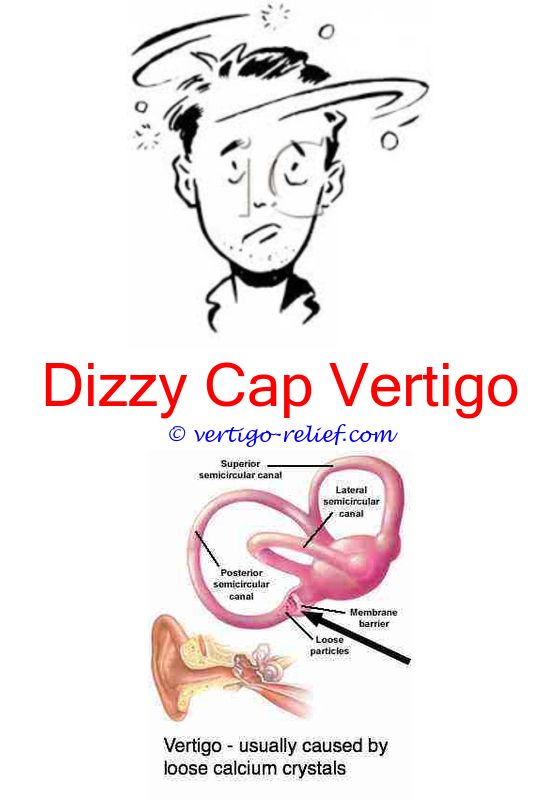

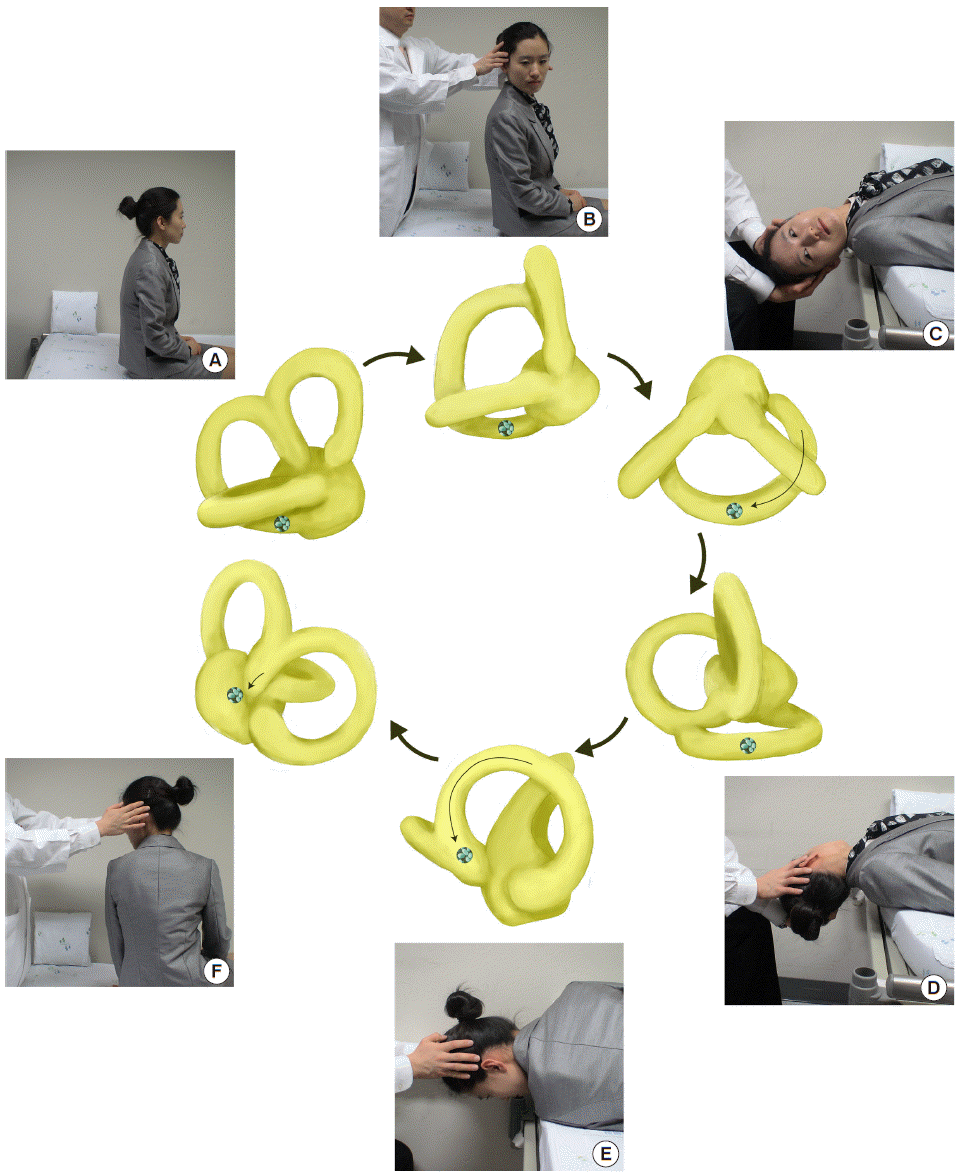
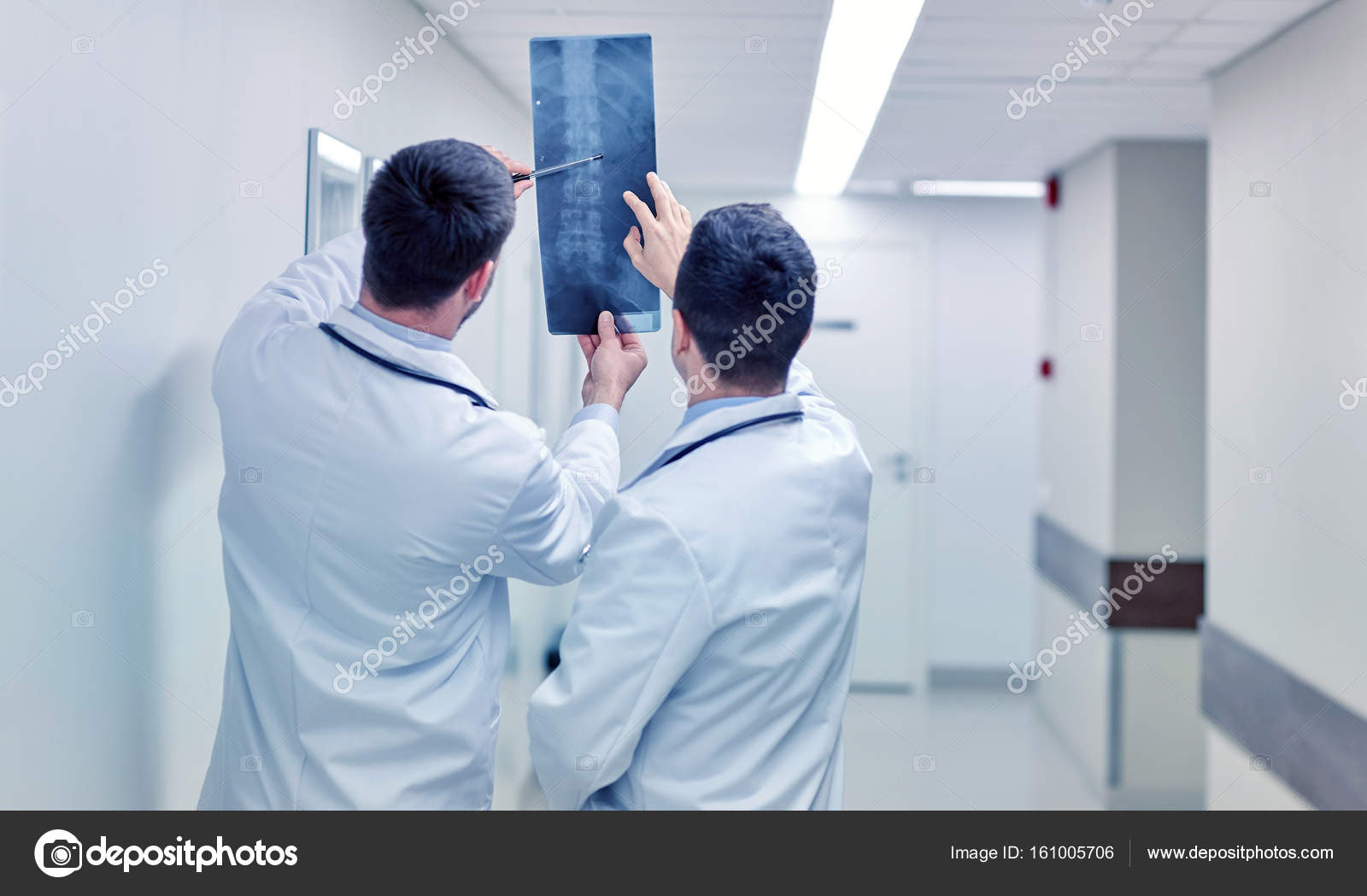
 This may prevent accidents and injuries.
This may prevent accidents and injuries. You may be taught to do these exercises on your own at home.
You may be taught to do these exercises on your own at home. Practice parameter: Therapies for benign paroxysmal positional vertigo (an evidence-based review). Report of the Quality Standards Subcommittee of the American Academy of Neurology. Neurology, 70(22): 2067–2074.
Practice parameter: Therapies for benign paroxysmal positional vertigo (an evidence-based review). Report of the Quality Standards Subcommittee of the American Academy of Neurology. Neurology, 70(22): 2067–2074.
 2004) Horii, A.,
2004) Horii, A.,
 This use of verapamil for vertigo has not been
This use of verapamil for vertigo has not been Side effects include
Side effects include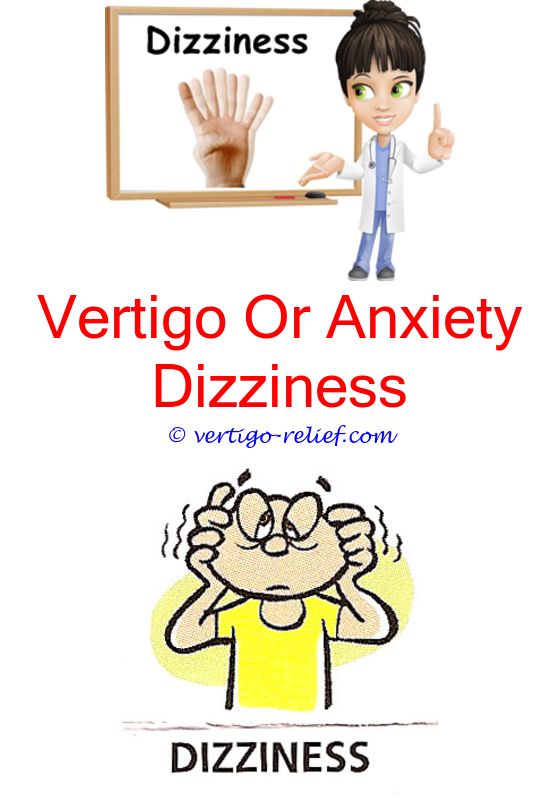 Gabapentin has also been successfully used to
Gabapentin has also been successfully used to This is an interesting group
This is an interesting group This may account for the recent suggestions to push the dose up to very high levels (e.g. Strupp et al, 2008).
This may account for the recent suggestions to push the dose up to very high levels (e.g. Strupp et al, 2008).
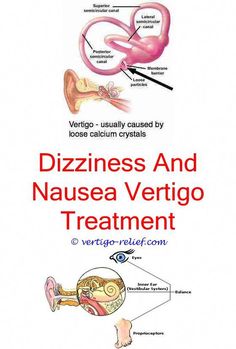 Our thought is that these drugs are far too dangerous to use for this purpose, and that there are much easier ways to stop Meniere’s attacks (e.g. lorazepam and ondansetron together).
Our thought is that these drugs are far too dangerous to use for this purpose, and that there are much easier ways to stop Meniere’s attacks (e.g. lorazepam and ondansetron together). (See here for the references).
(See here for the references).